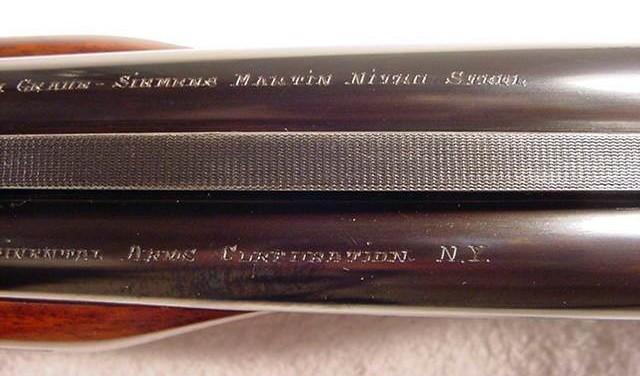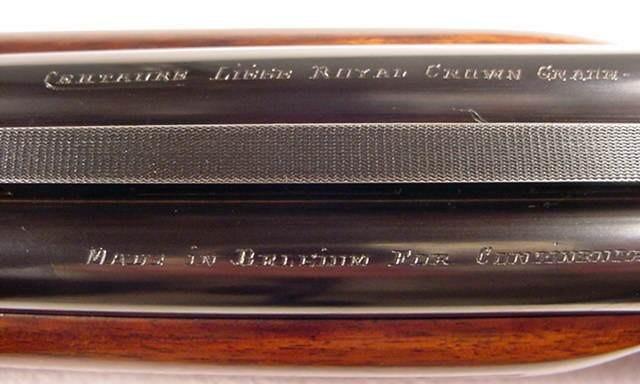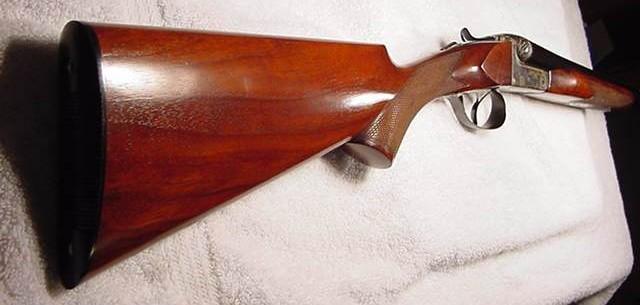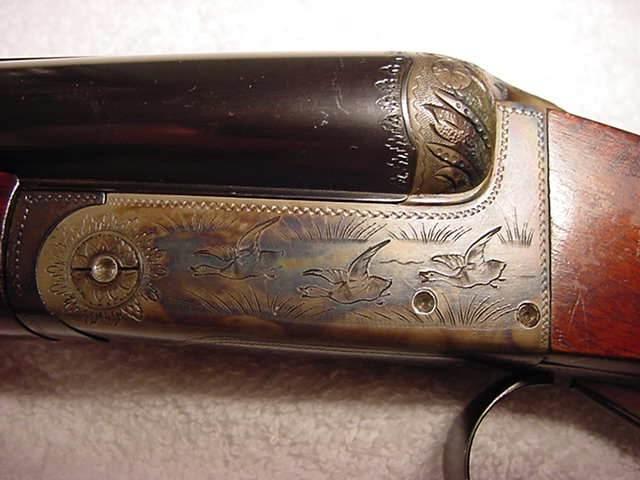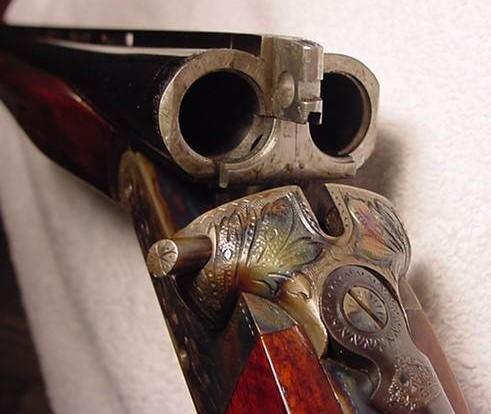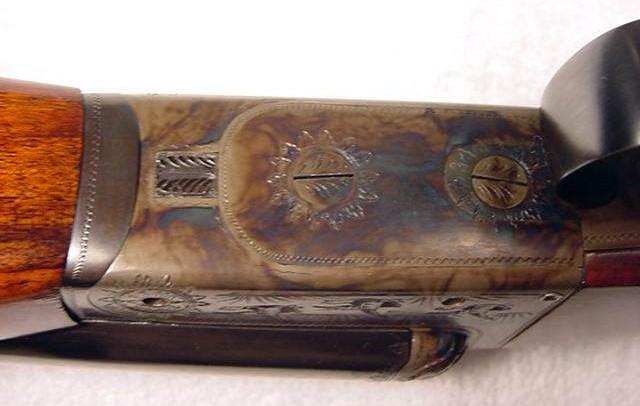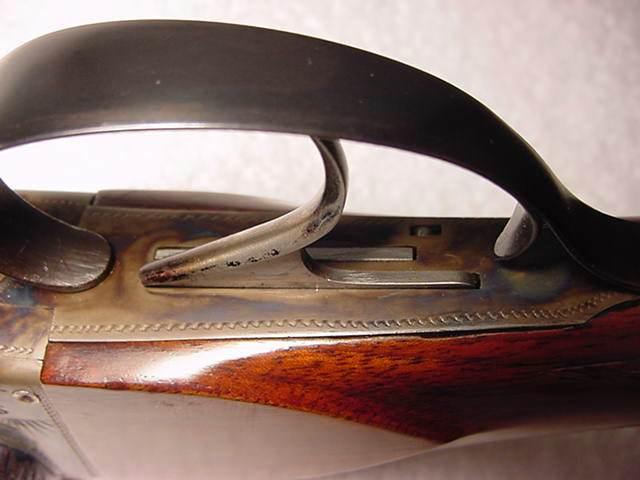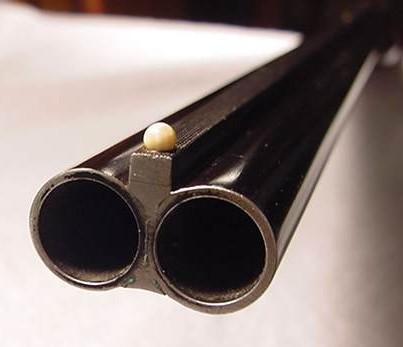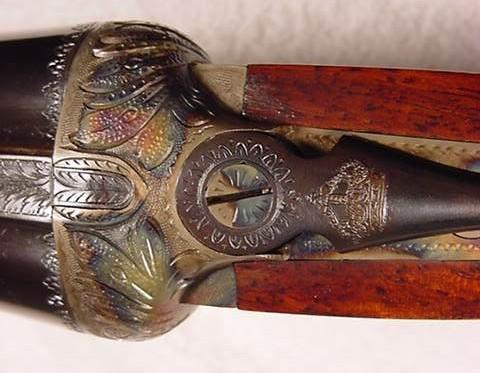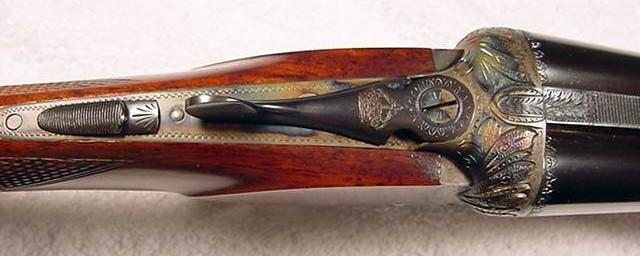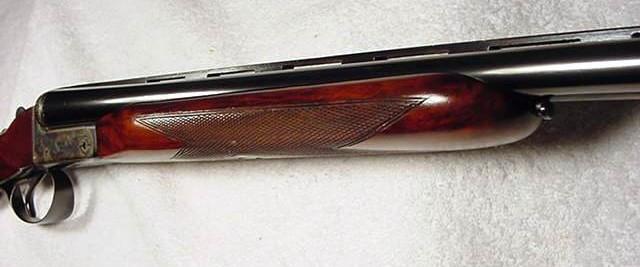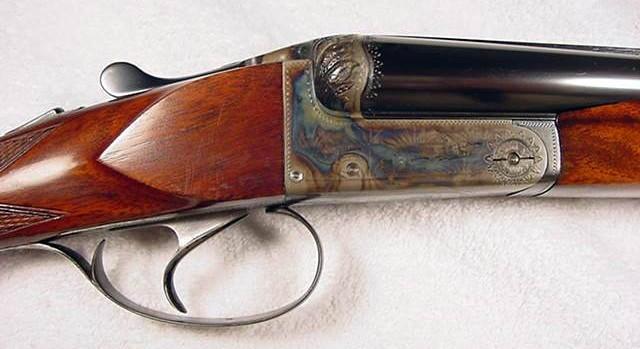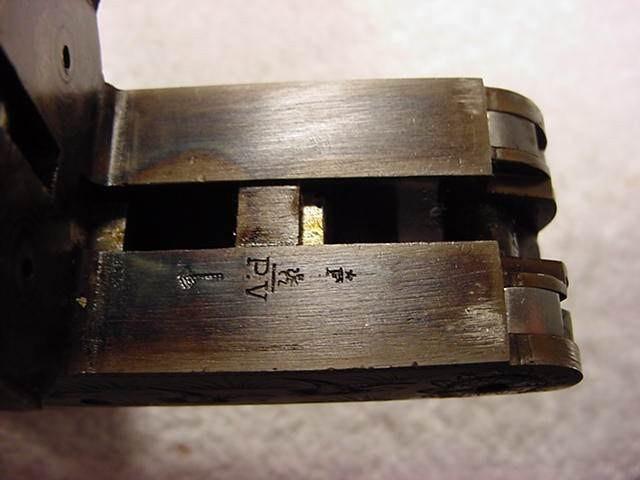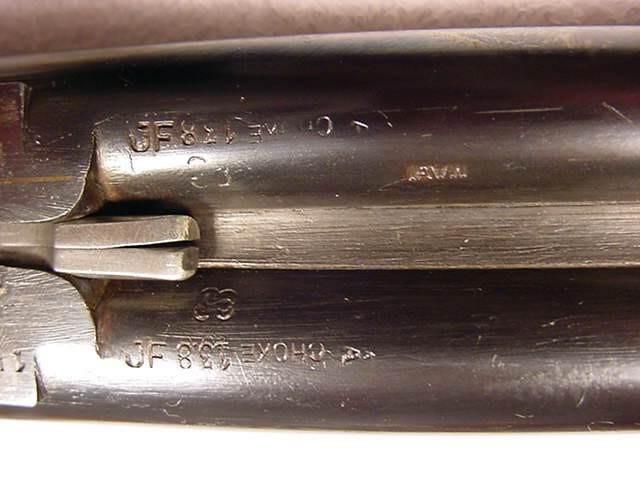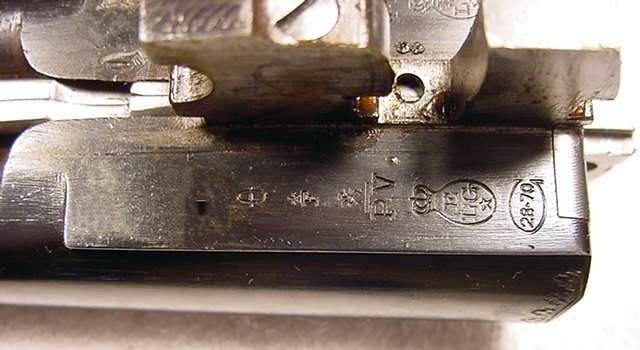Some of the most beautiful work of this craftsman, and many others, are in this book “Liège Gunmakers through their Work. 1800 - 1950”.
For more detail see: LIEGE GUNMAKERS
Fabriques d’Armes Réunies (Maybe !)
Here is a
"cheap" percussion pistol made in Liège, a copy of the pistols used to finish
off wounded animals. The barrels are of course made of fake damas. The primer
box in the butt of the stock is moulded and not engraved/chiselled. There is no
manufacturer's brand, which is understandable because there is no real reason to
be proud of it.
The
markings
ELG on star in oval: in use since 1893 for the barrels loading by the mouth;
EL: provisional test, in use since 1852;
Belgium: without comment;
17.0: the diameter of the barrel, in mm.
The
barrels do not rotate since there are two hammers and two chimneys and only one
barrel has a front sight.
One member of the team believes that it is a
production of the "Fabriques d'Armes Réunies"
(FAR) or
the "Fabriques
d'Armes Unies de Liège" (FAUL)
dating from the first half - or even the first quarter - of the 20th century.
GP and PHL and the whole team.
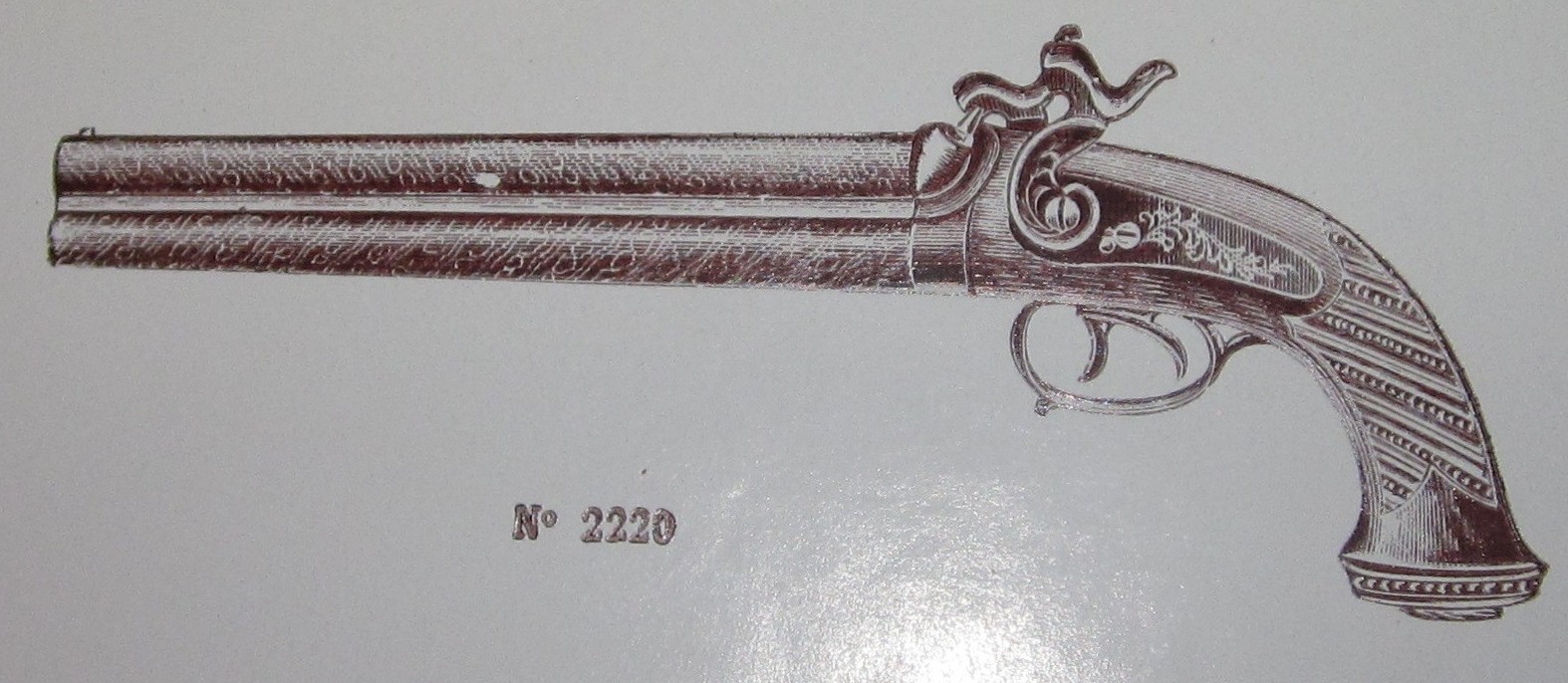
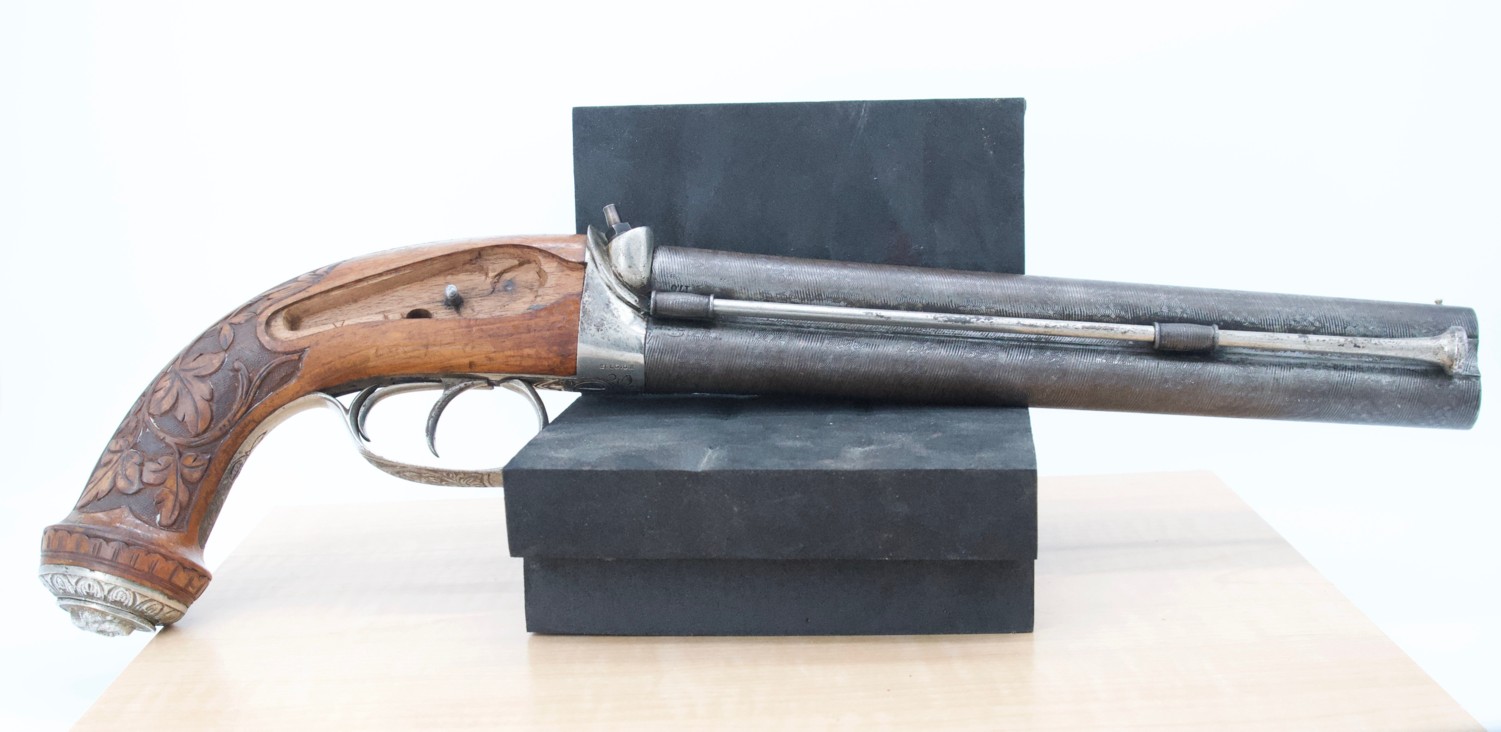
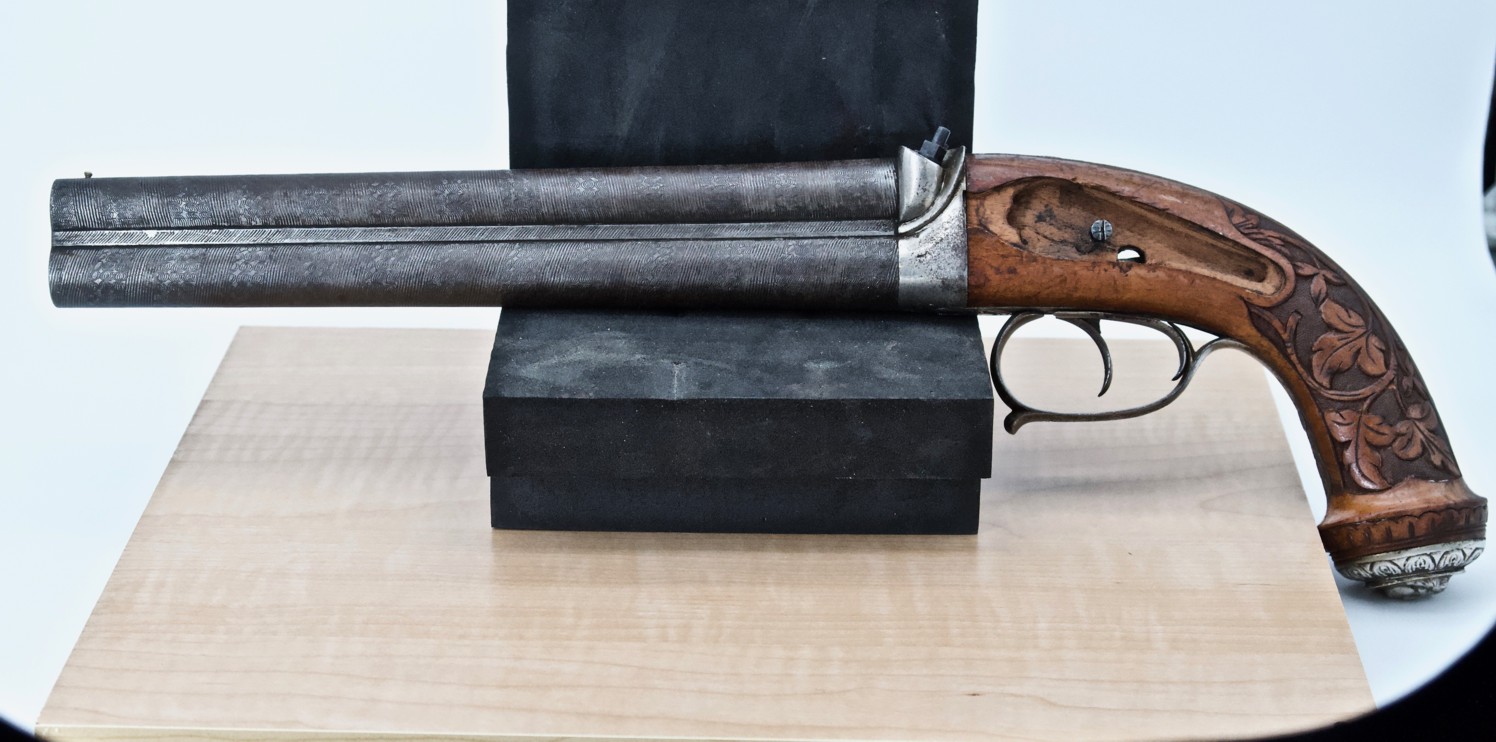
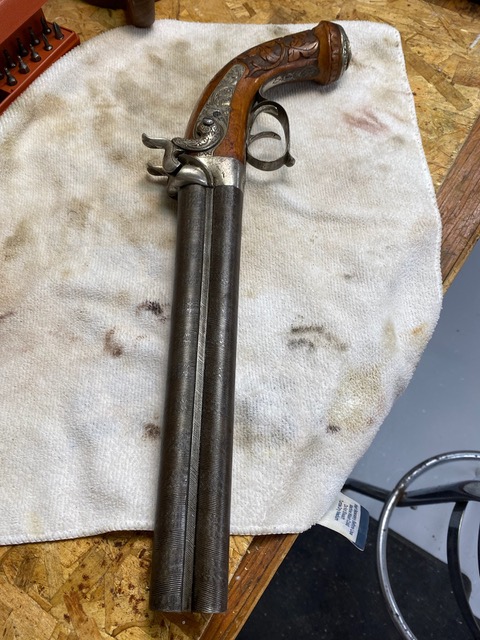
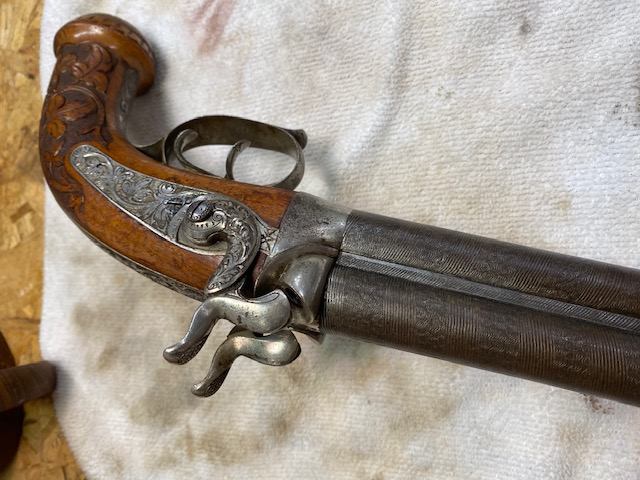
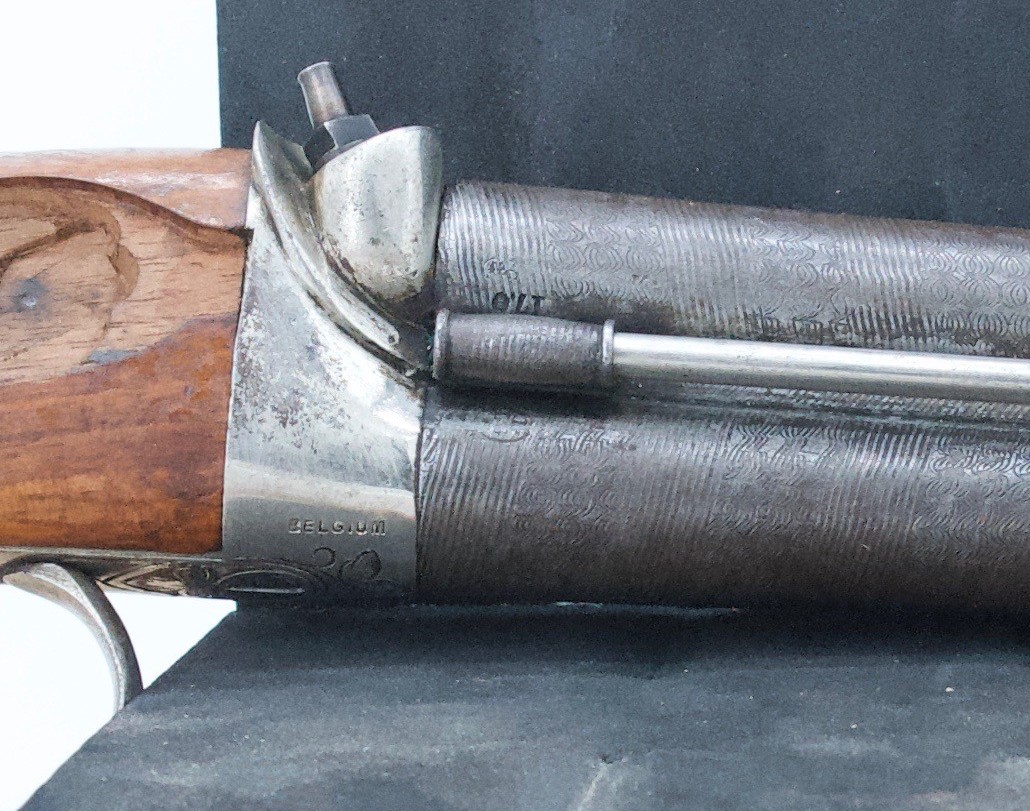
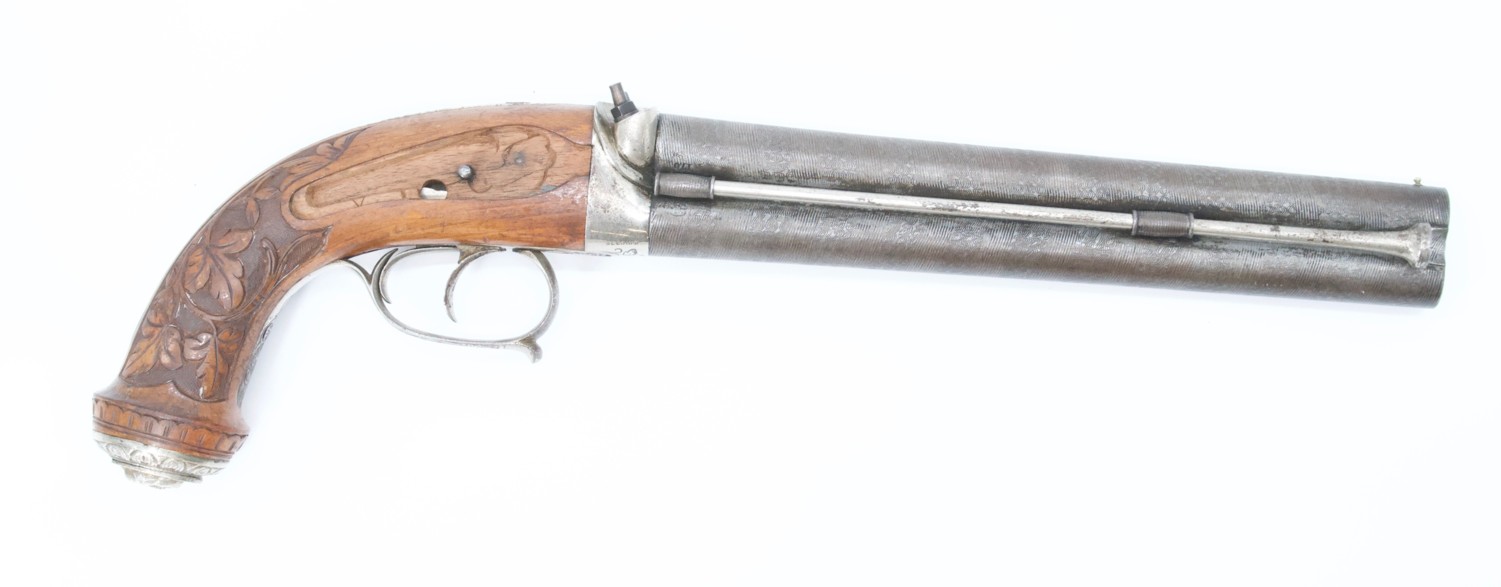
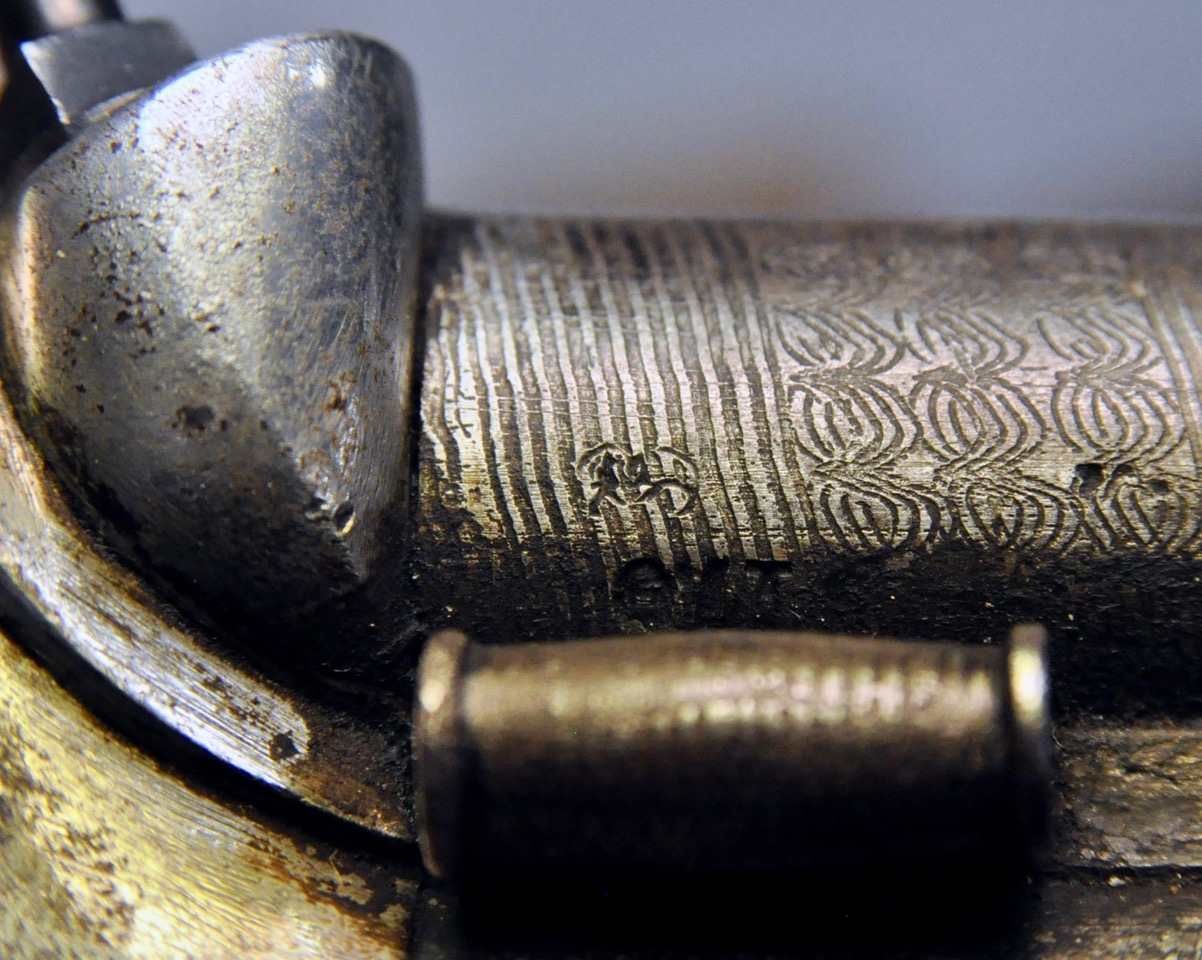
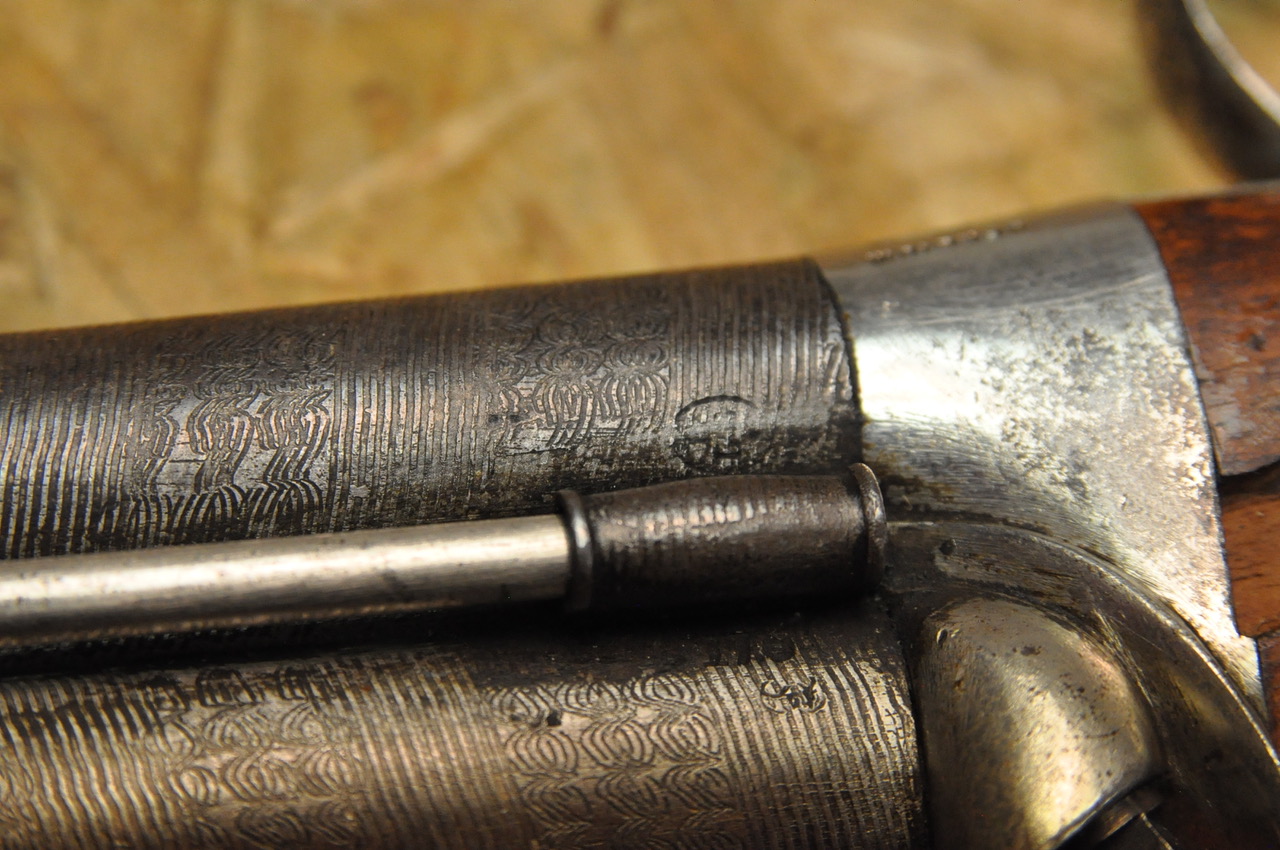
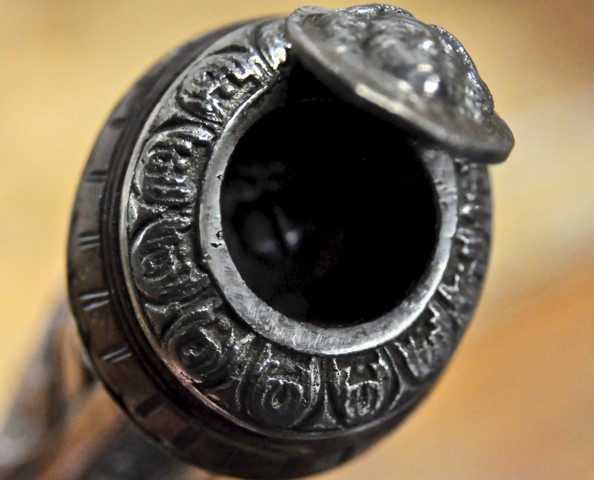
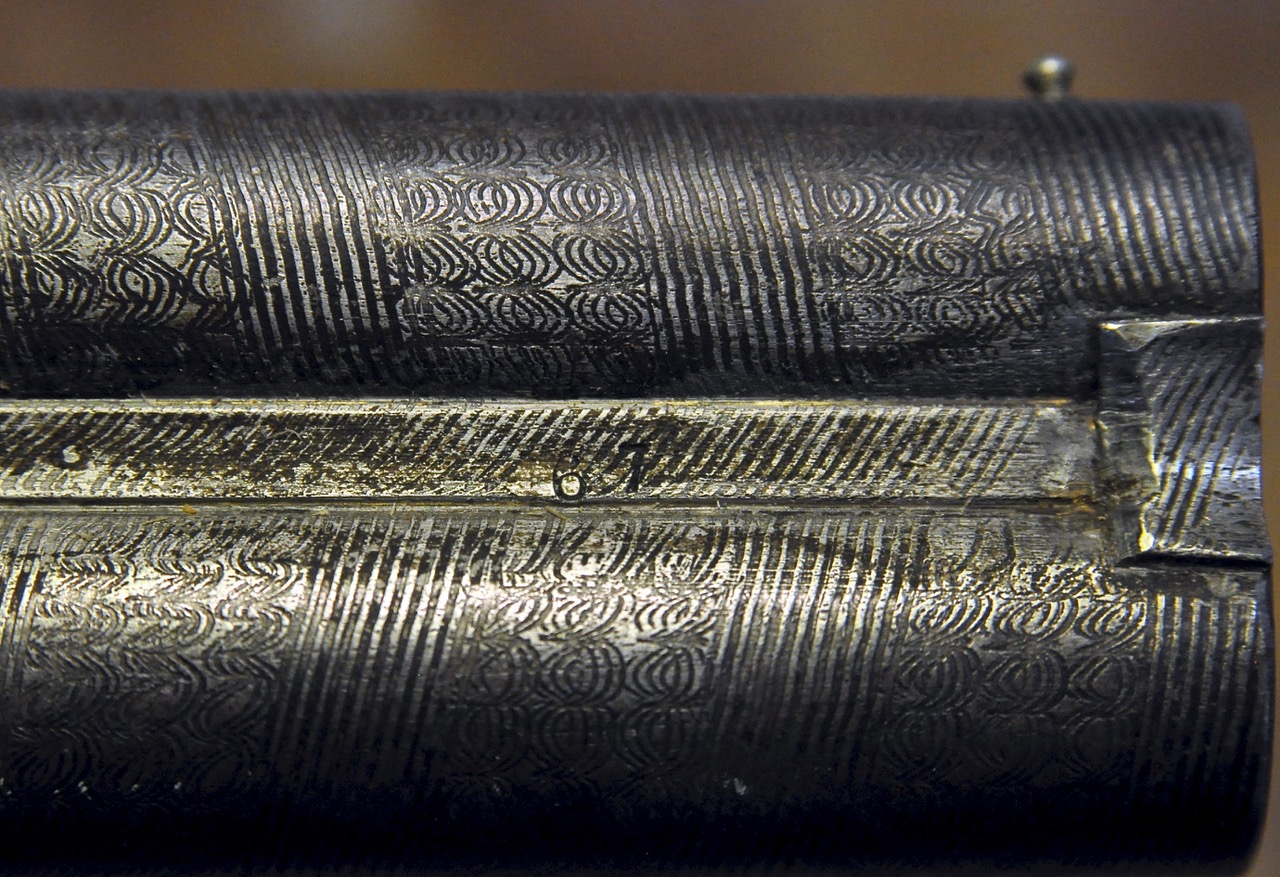
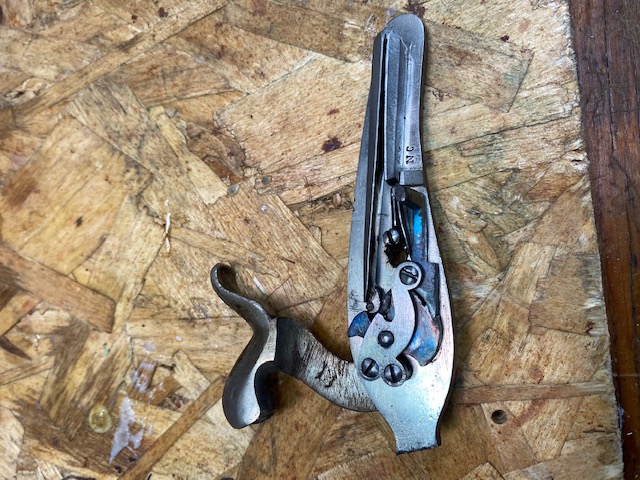
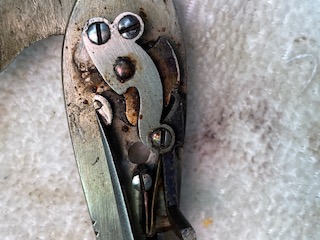
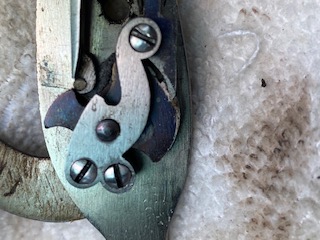
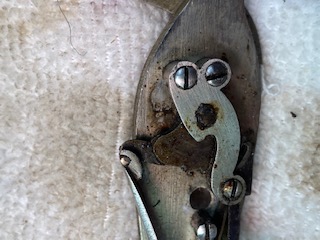
Fabriques d’Armes Réunies
It is
about a shotgun to percussion (capsules) of origin of Liège.
The juxtaposed barrels were manufactured by the
manufacturer of barrels
Laurent Lochet-Habran
of Liege-Jupille (see our site).
Saint
Etienne is a mark added subsequently by the purchaser!
The stock
in walnut of type “pistol” is provided with one limps with capsules representing
an eagle with the spread wings (brass). The triggers are protected by a trigger
guard with volutes.
Mark
Simbert belongs
to S.A. des Fabriques d’armes réunies (Arms
factories joined together - Albert Simonis - Antoine Bertrand & Fils,
street Trappé, 22 in Liege).
This mark
was deposited the 2/10/1904!
This firm
a long time manufactured weapons with percussion which it exported throughout
the world and in particular South America and Africa.
Mark
LLH belongs to
the manufacturer of barrels of rifles
Laurent
Lochet-Habran of Liege-Jupille. This mark
was deposited the 2/4/1904.
Six marks
IIIIII
belong to the equipor (anonymous) who worked the weapon.
The
weapon does not carry a date of manufacturing but the inscription of this firm
to the proofhouse of Liege goes from 1901 to 1920.
The
punches according to belong to the proofhouse of Liege, street Fond of Tawes,
namely:
ELG +
star with 5 branches in a vertical oval:
acceptance, of du11 use July 1893 at our days
EL in
English letters:
provisional test, of use of 1852 to our days.
Peron:
inspection, of use of 1853 to our days.
D* and R*:
countermarks of the controllers, of use of 1877 to 1968.
18.6:
gauge in mm, of use of 1889 to our days.
9740:
number of the weapon.
GG
“Simbert”
is the contraction of
Sim(onis) and
Bert(rand)!
Alain (Webmaster)
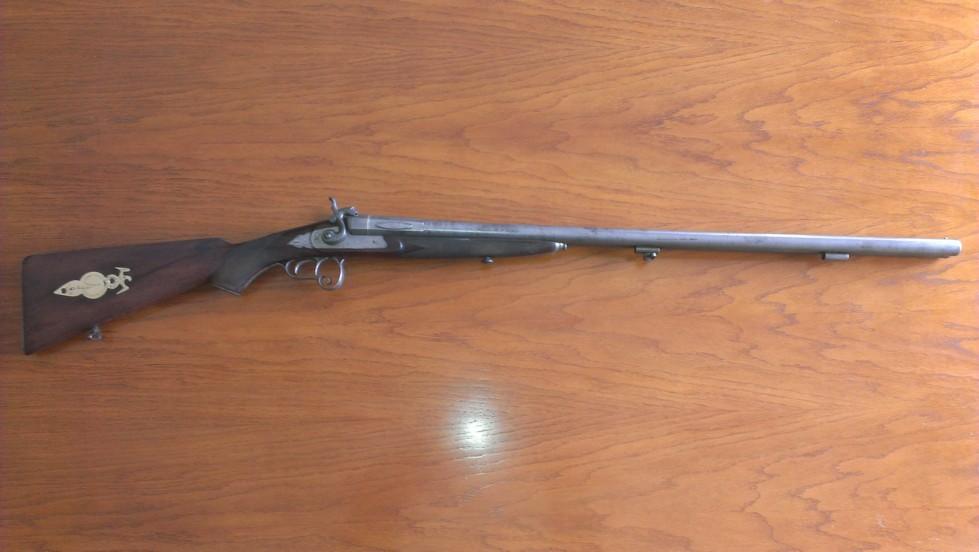
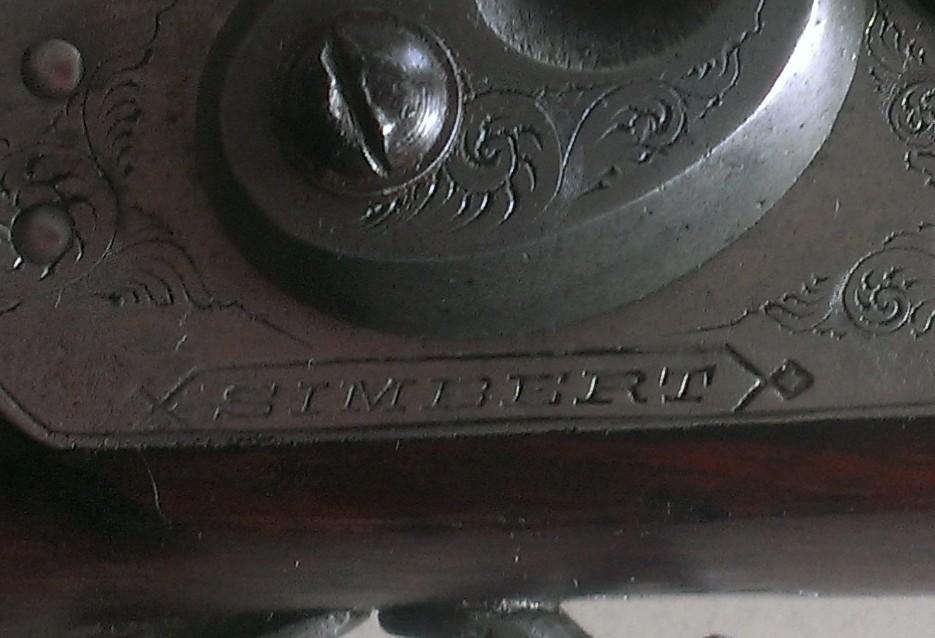
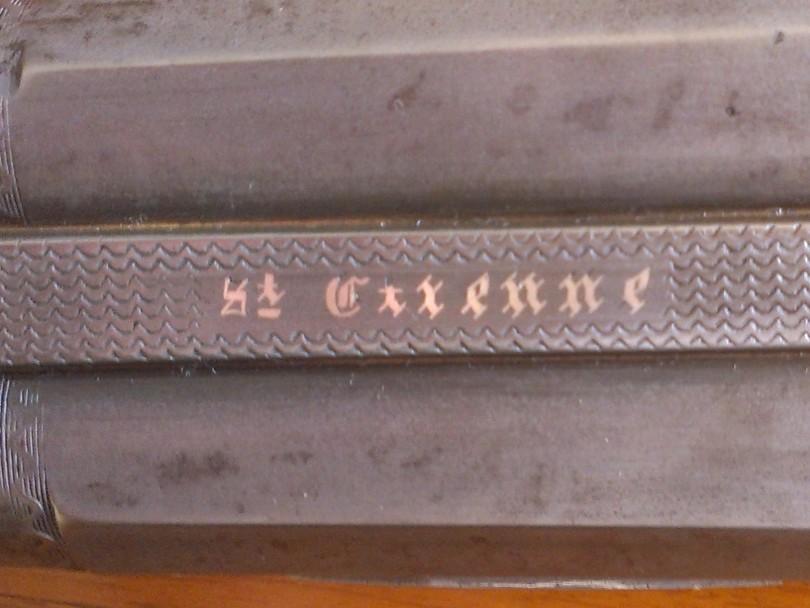
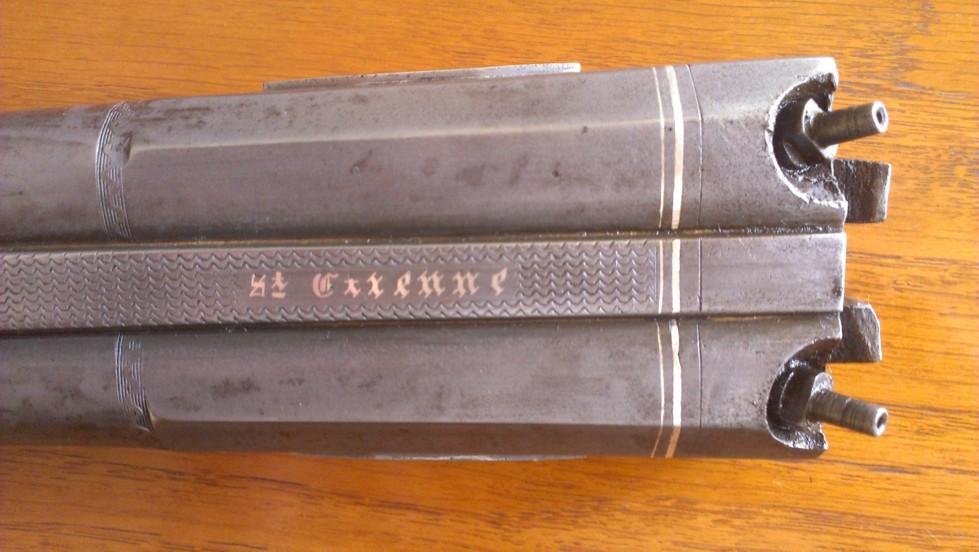
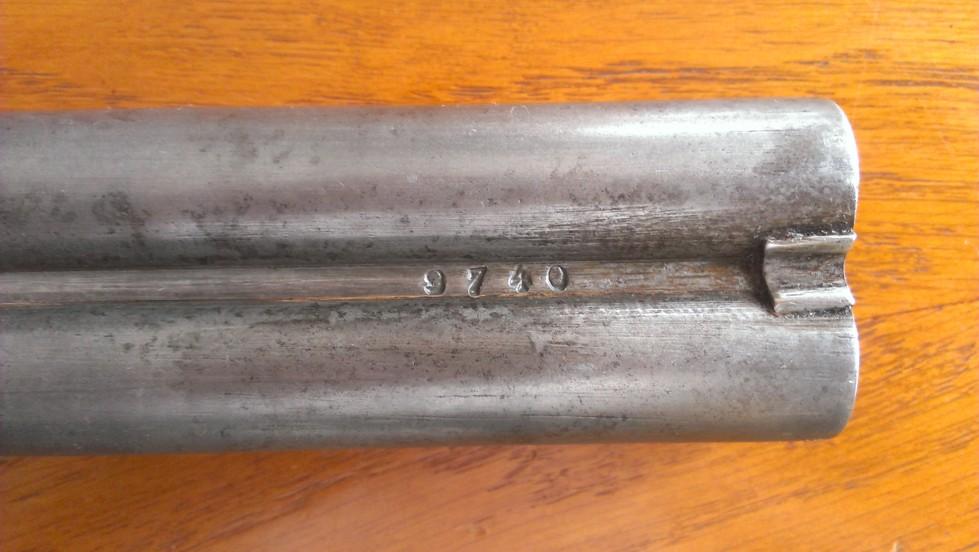
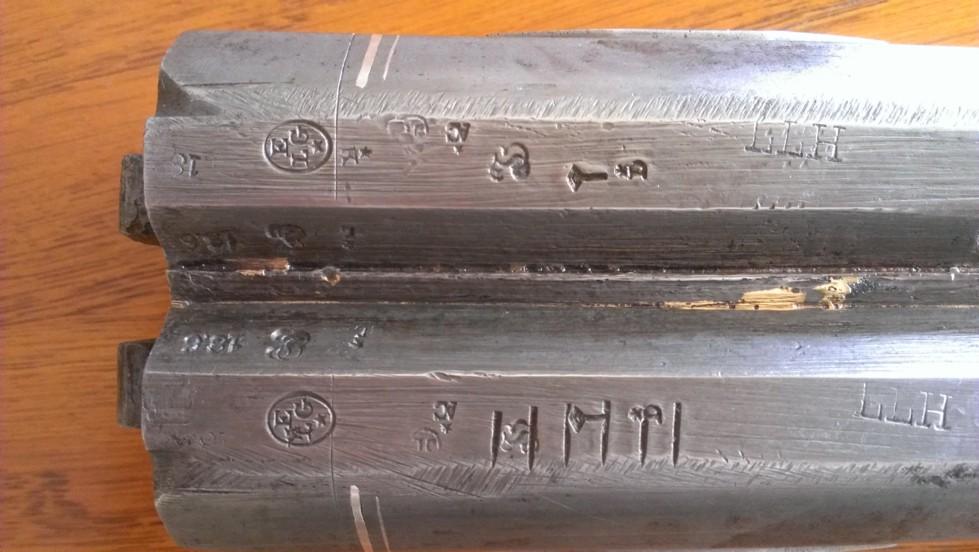
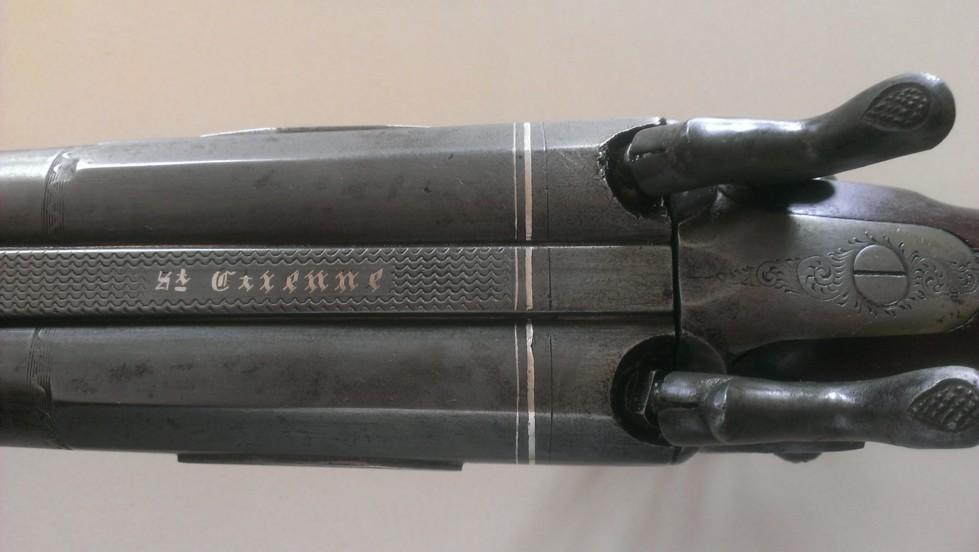
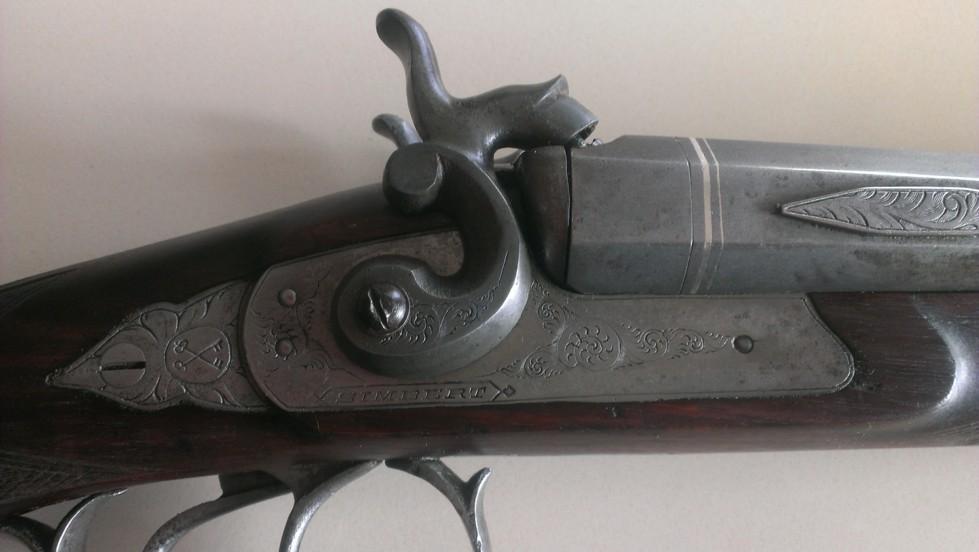
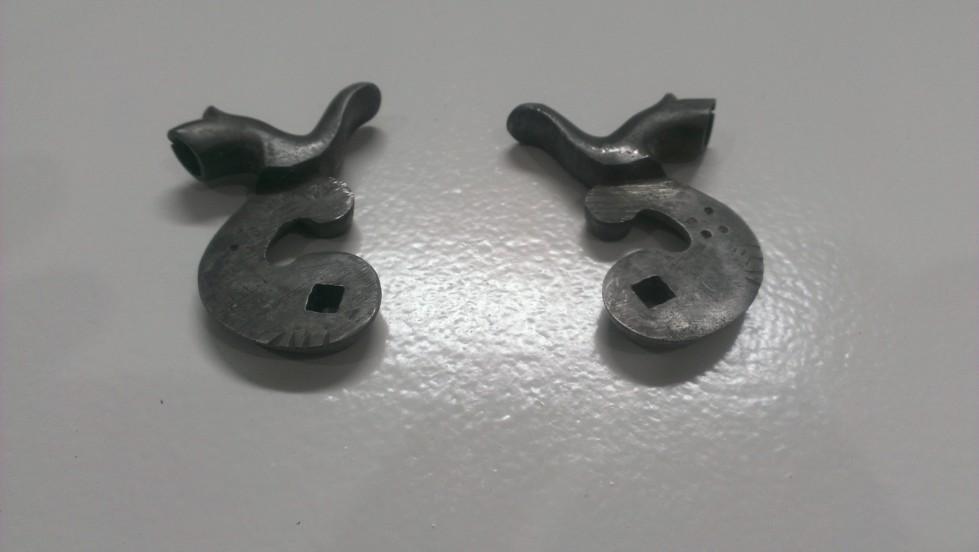
Fabriques d’Armes Réunies
Here a
rifle SxS hammerless system Anson quasi centenary. On the barrels one can read
Fabrique d’Armes Réunies Liège (Manufactory Joined together Liège). The fitting of the stick leaves
something to be desired so much that one can suppose that it is not the original
stick.
Markings
Peron:
punch of inspection since 1853
ELG in
crowned oval:
acceptance, of application between 1893 and 1968
EL: provisional test since 1852
T under
star:
countermark of the controller since 1877
PV on
Lion:
test with the smoke-free powder, of application between 1898 and 1968
16 in
rhombus:
indication of the gauge, application between 1898 and 1924
P 1K326.3:
weight of the barrel, application between 1892 and 1924
D 65 out
of 19.00 m/m:
length of the room (65 mm) and diameter in mm after the optional test with the
smoke-free powder, of application between 1892 and 1924
HP: initial (of the gunner?) not identified
AD under
star:
countermark of the controller since 1877
34555:
undoubtedly the number of the weapon
16.4 out
of 17.0 choke:
barrel choke in mm to 22 cm of the breech and the mouth, of application between
1910 and 1924.
The " Fabrique d’Armes Réunies S.A." was registered with the proofhouse of Liege of 1901 to 1920. It was
established street Charles Morren, 26-28 in Liege. It was made up in 1901 by
Albert Simonis, Antoine & Fils Bertrand, A. Riga & Co, Pirlot and Frésart and
part of Pirlot Frères. In 1920, the activity is taken over by the F.AU.L. (Arms
factory Plain of Liege, street Trapped, 22, in Liege).
The FAR
deposited thirteen patents between 1905 and 1921 for rifles, guns and revolvers.
GP
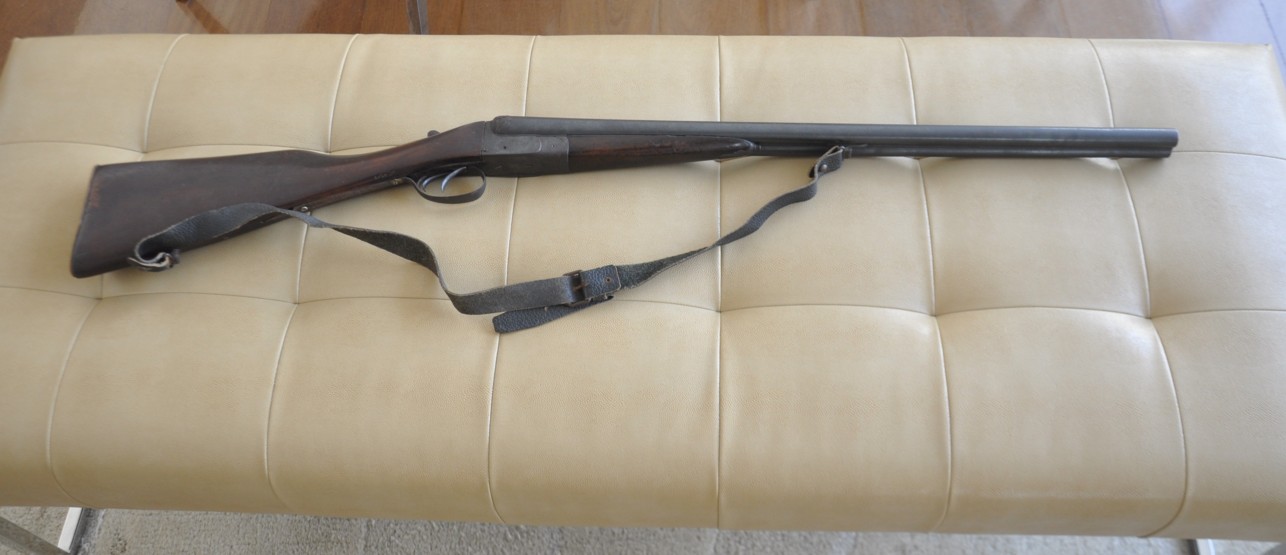
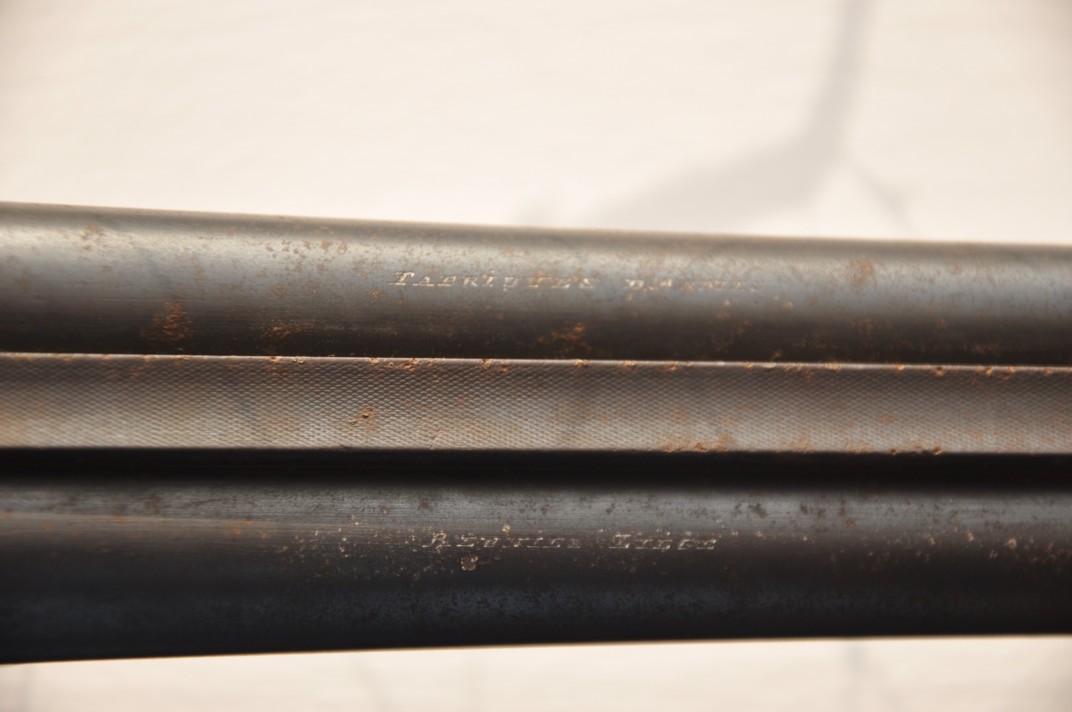
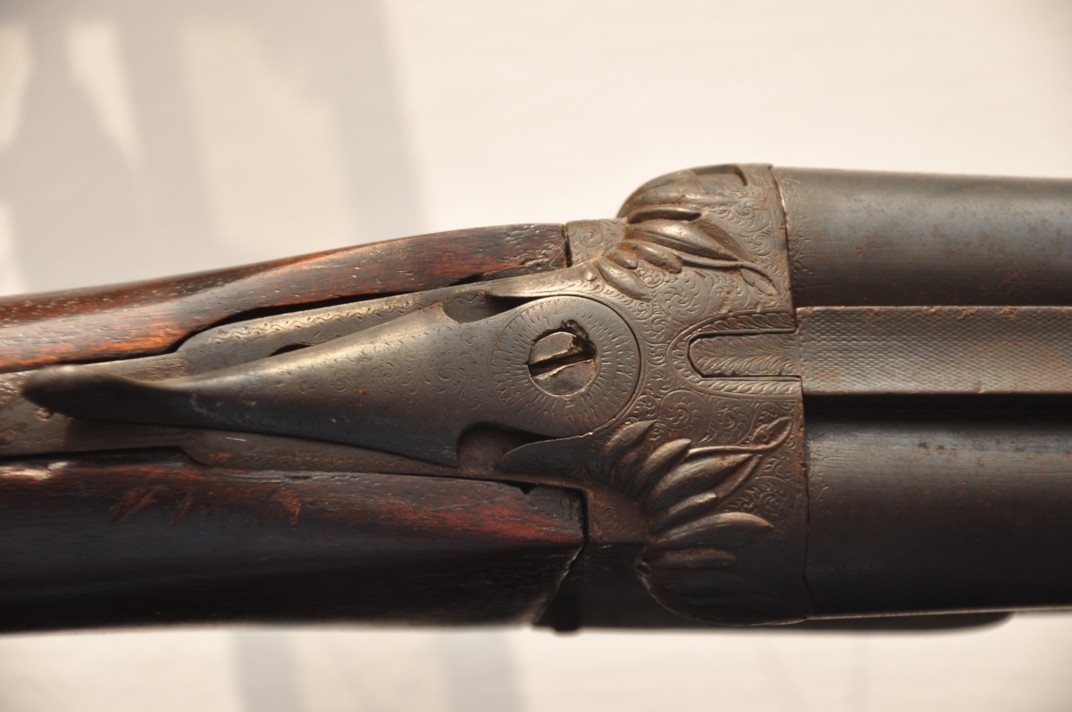
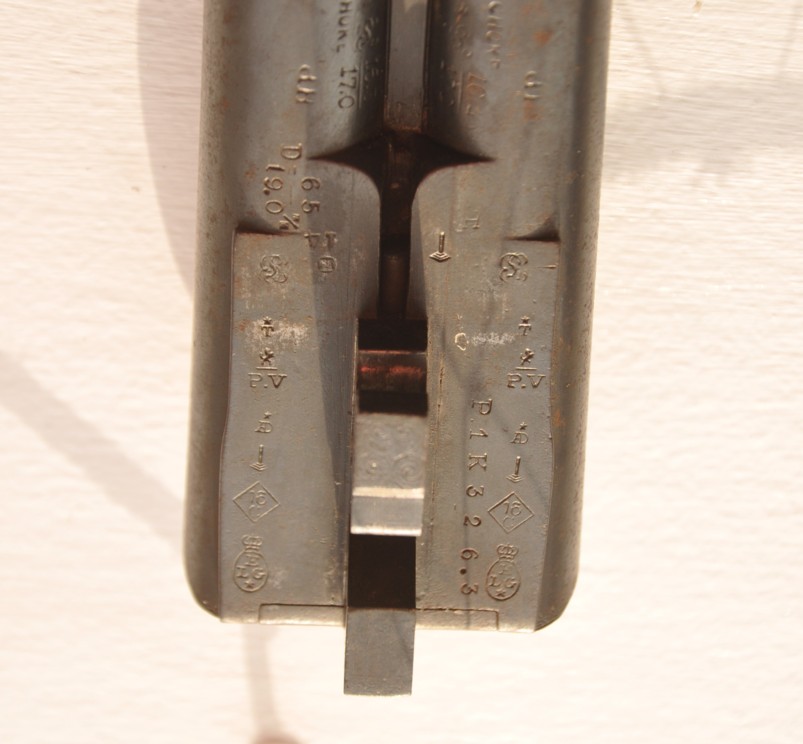
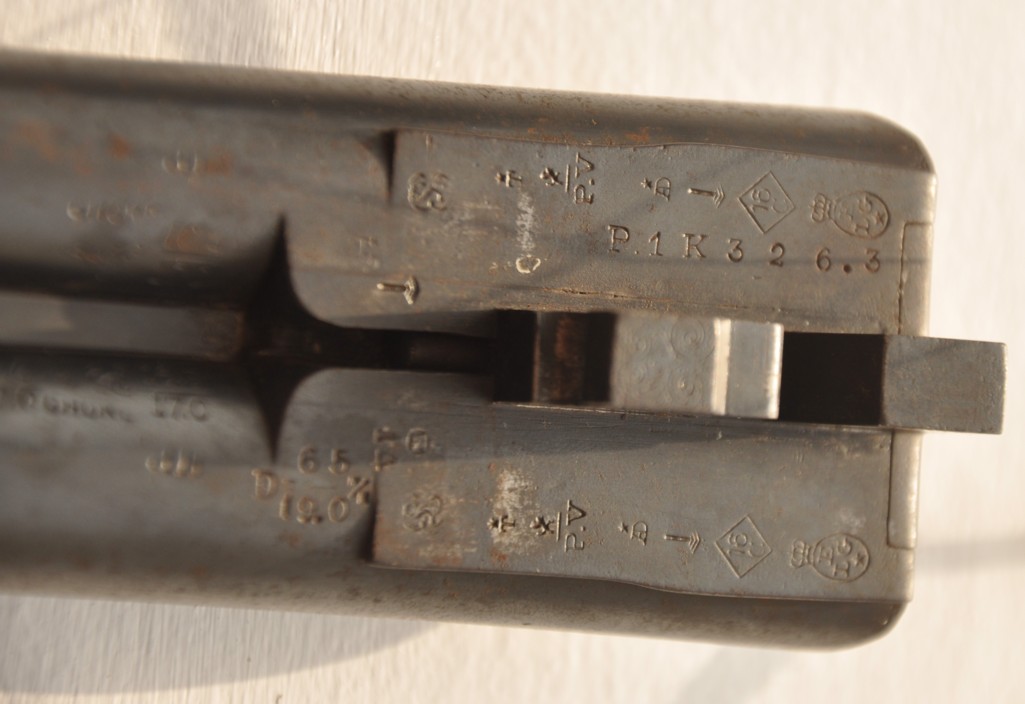
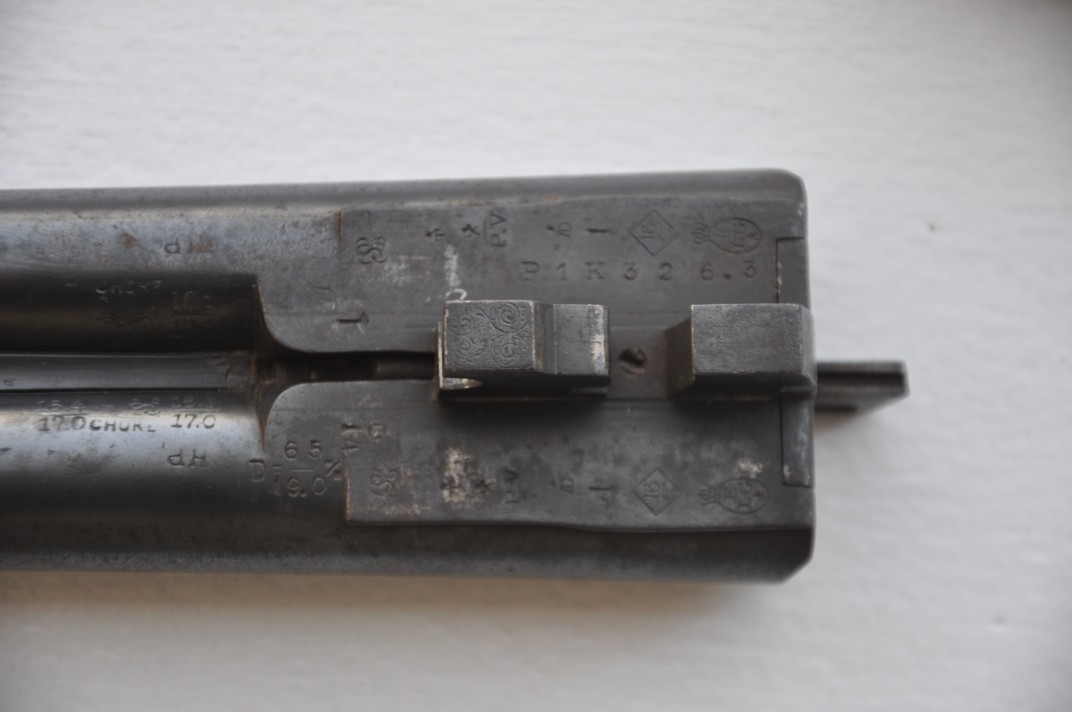
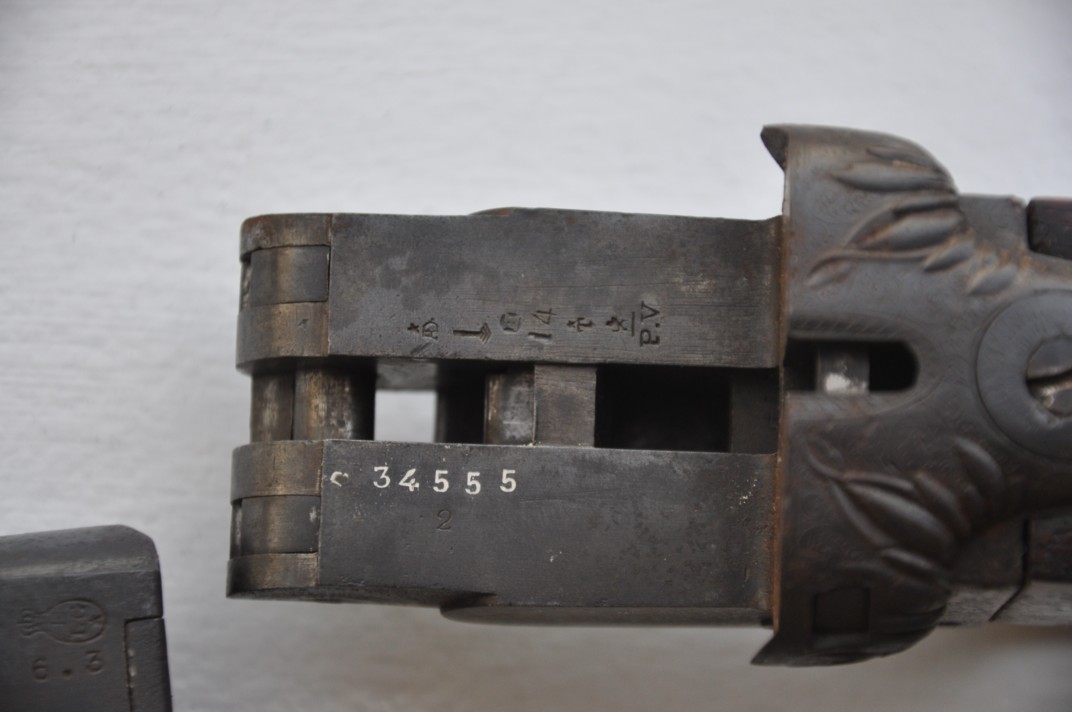
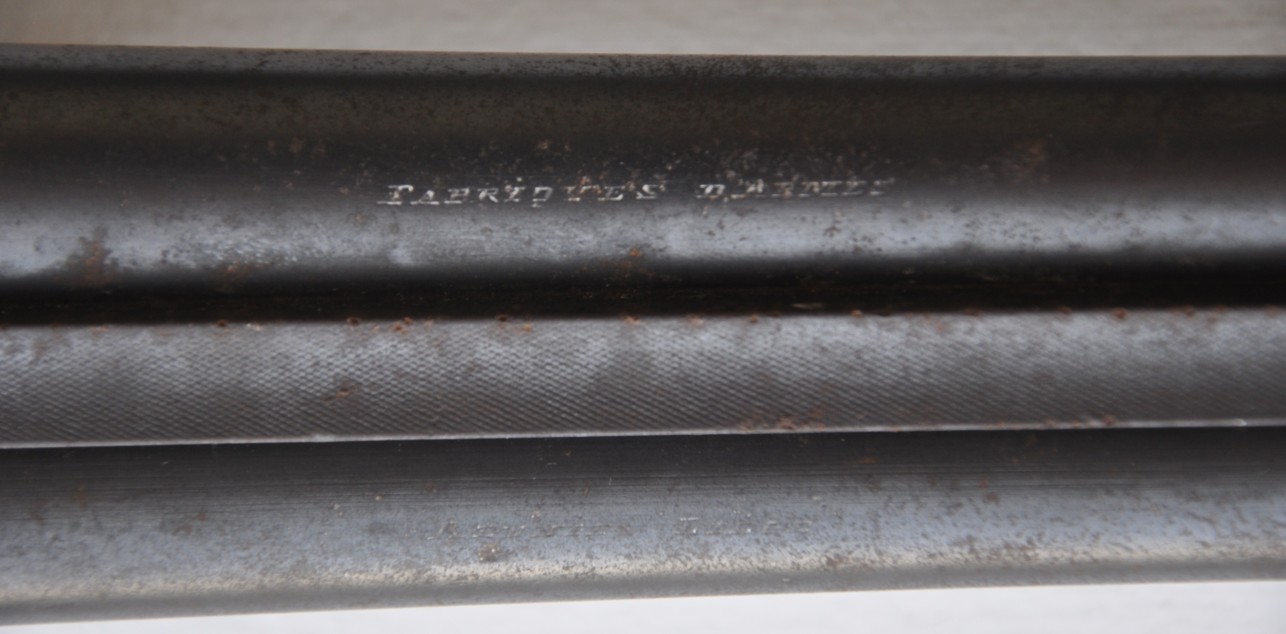
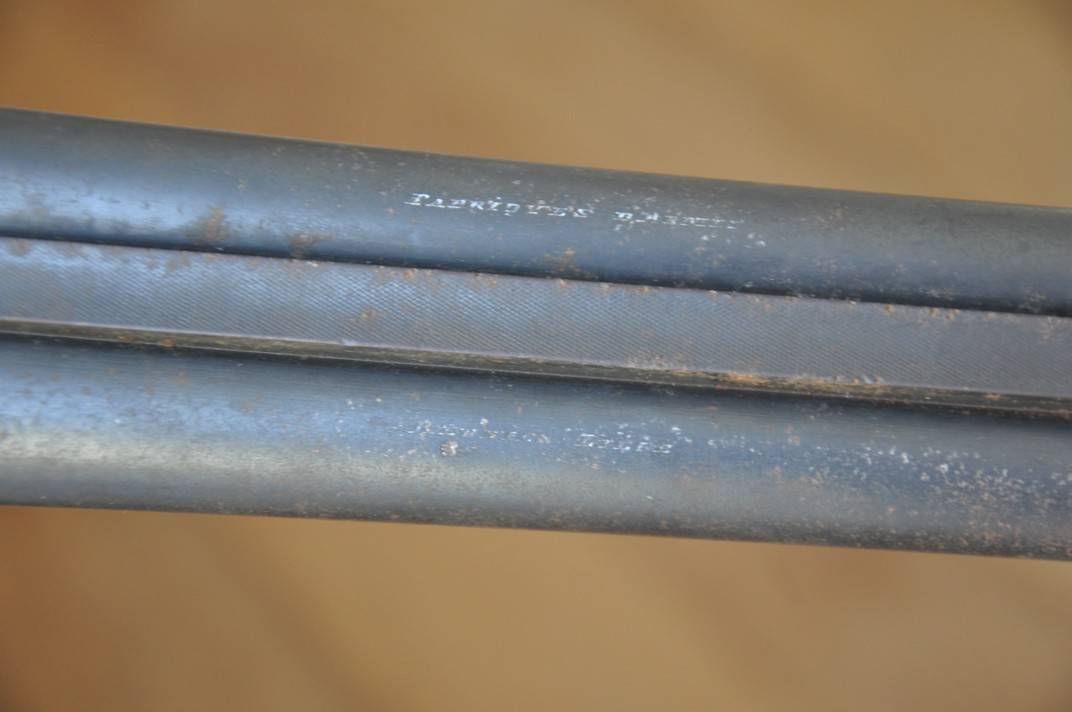
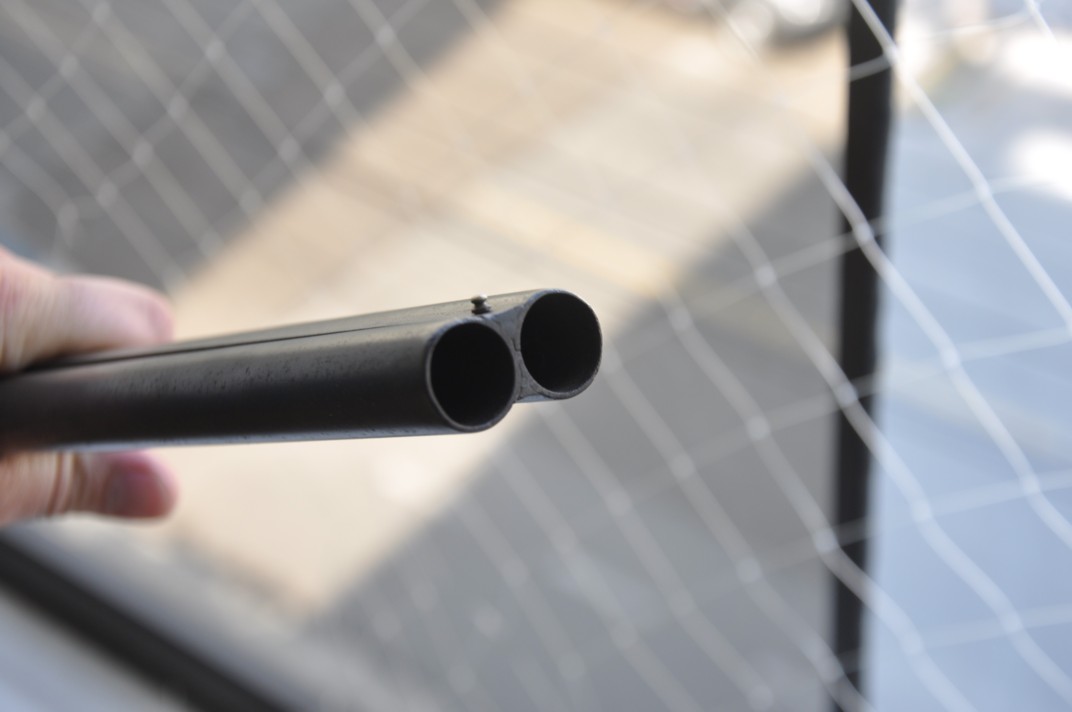
Fabriques d’Armes Réunies
The weapon
It is about a shotgun “hammerless” with unrifled bores and juxtaposed.
The opening is practiced using the key “Top lever”.
The lock is square and decorates in hollow bottom with subjects animalist.
The stick out of wooden of walnut is worked with English. The forearm is with push rod.
Punches
The weapon carries the punches of the proofhouse of Liege, namely:
ELG on star in a crowned oval: final acceptance post 1893.
EL in English letters: provisional test, of use of 1852 to our days
X and AE spangled: countermarks of the controllers post 1877.
12 C in a rhombus: gauge, of use of 1898 to 1924.
Peron: inspection post 1853.
PV surmounted of a stylized lion: test with the powder without smoke, of use of 1898 to 1968.
P.1K542.2: weight of the barrel which can draw from the powders without smoke (smooth weapons). In use of 1892 to 1924.
D= 65 mm/20.6: length of the room in mm and diameter in mm after optional test with the powder without smoke. In use of 1892 to 1924.
Marks
DICTATOR: in fact CHARLEMAGNE with horse also named IMPERATOR marks deposited the 24.07.08 by the FABRIQUES D’ARMES REUNIES (JOINED TOGETHER ARMS FACTORIES) (F.A.R.) street Trappé, 22 in LIEGE. (See the site)
EPROUVE AUX POUDRES PYROXILEES (TEST WITH POWDERS PYROXILEES): indicative and advertising mention of the F.A.R.
ACD in a circle on the barrels: mark of the manufacturer of barrels of rifles BALTUS in Nessonvaux.
Appendix: mark F.A.R.
GG

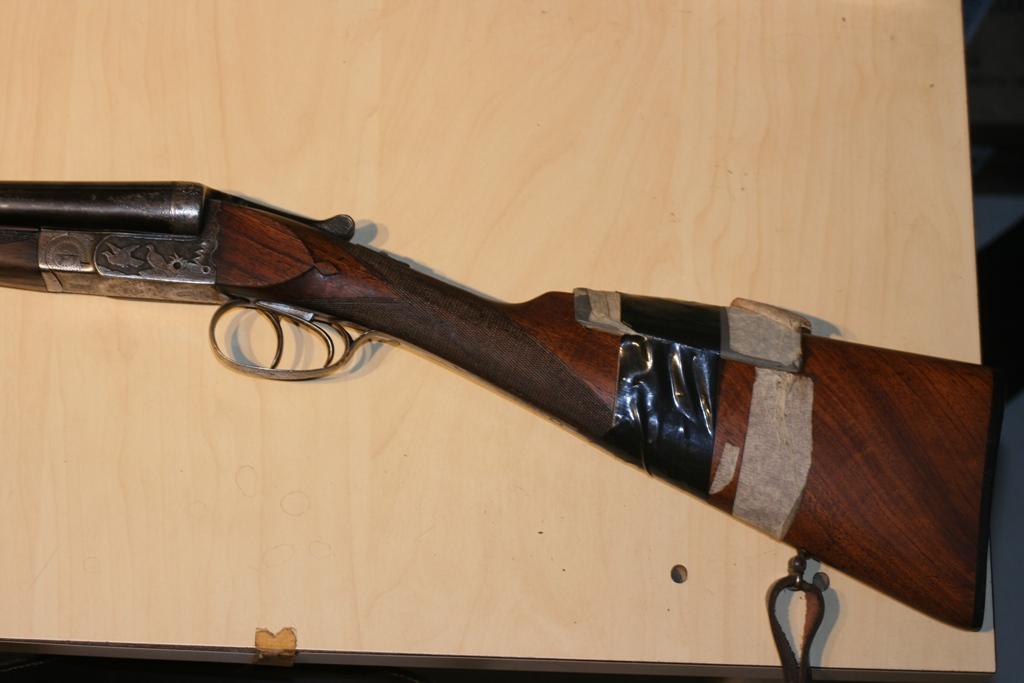
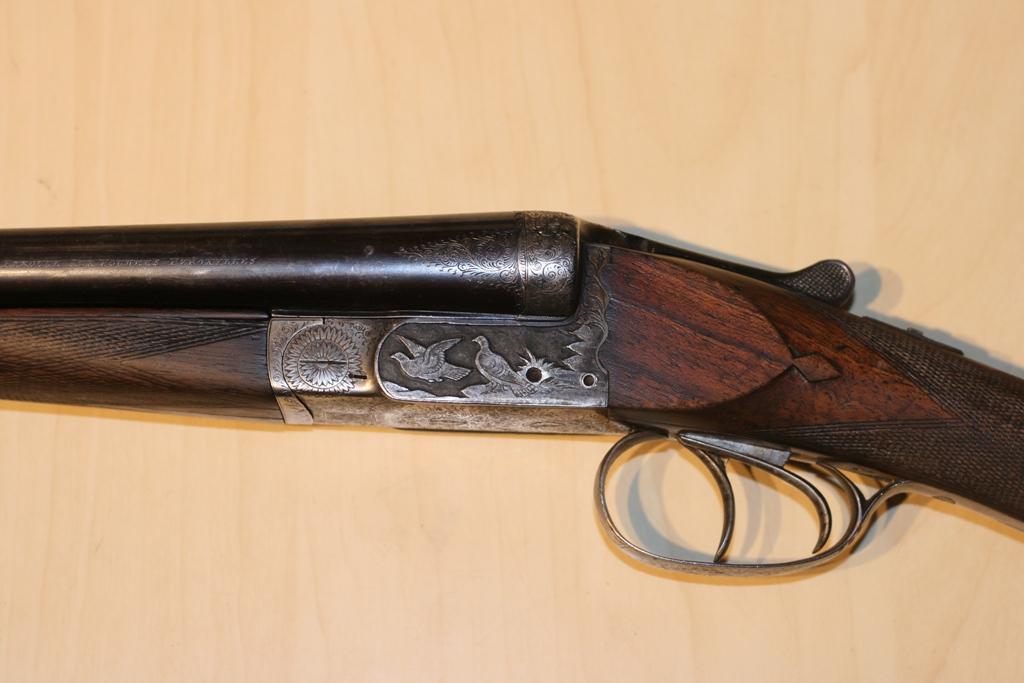
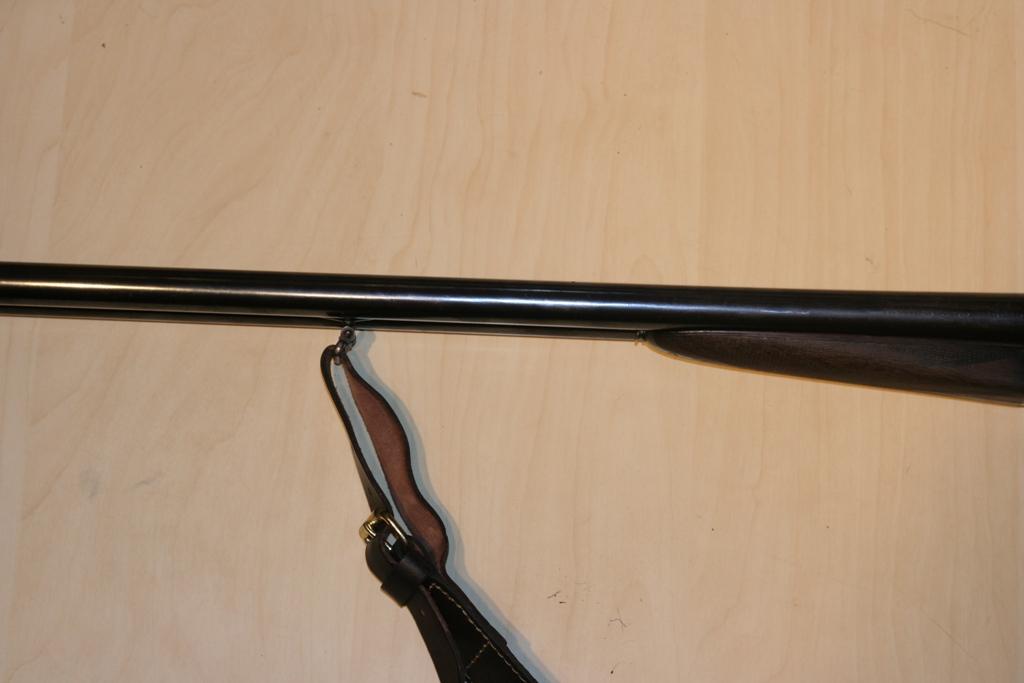
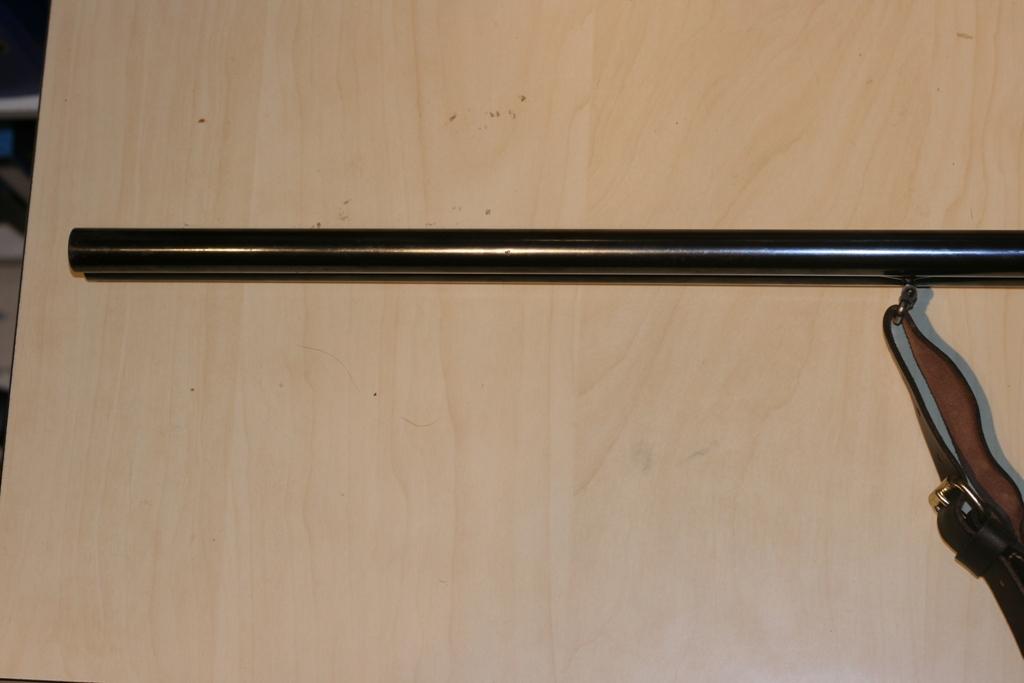
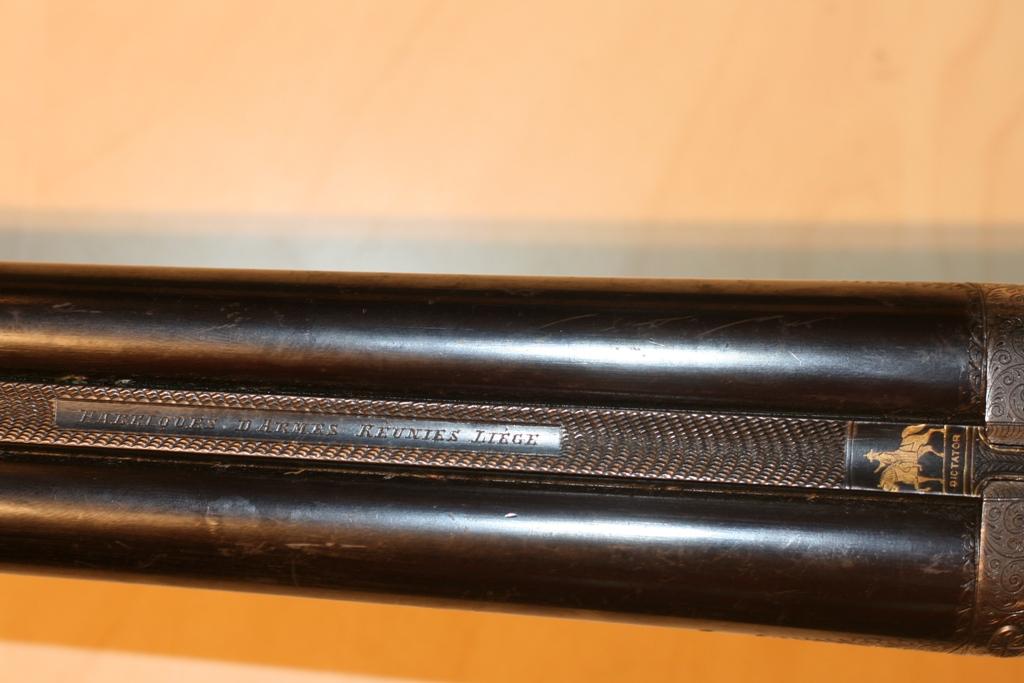
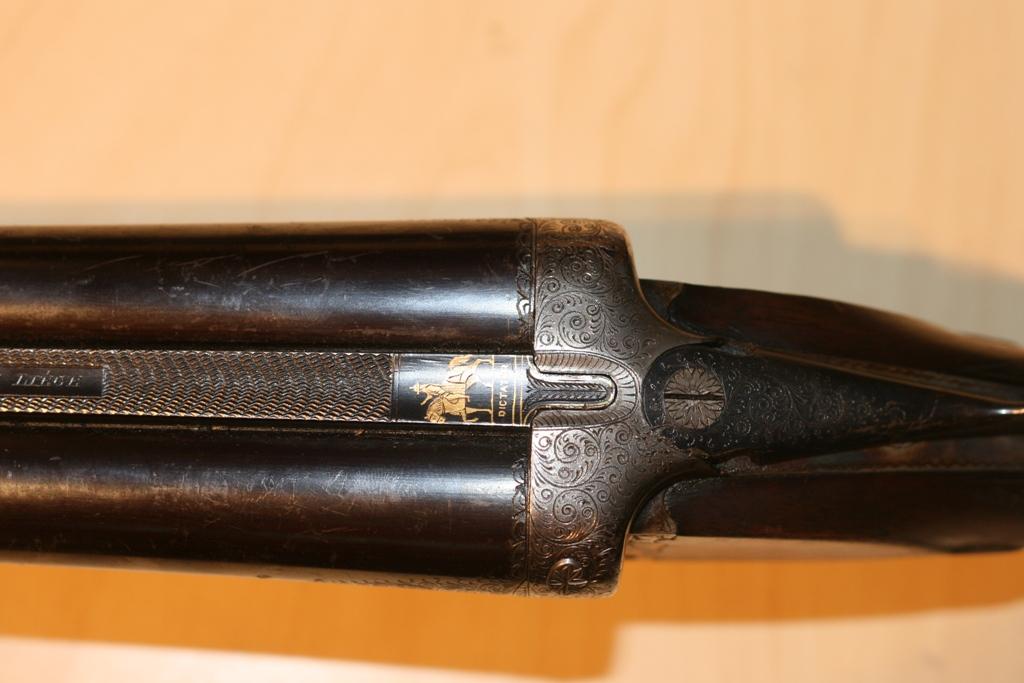
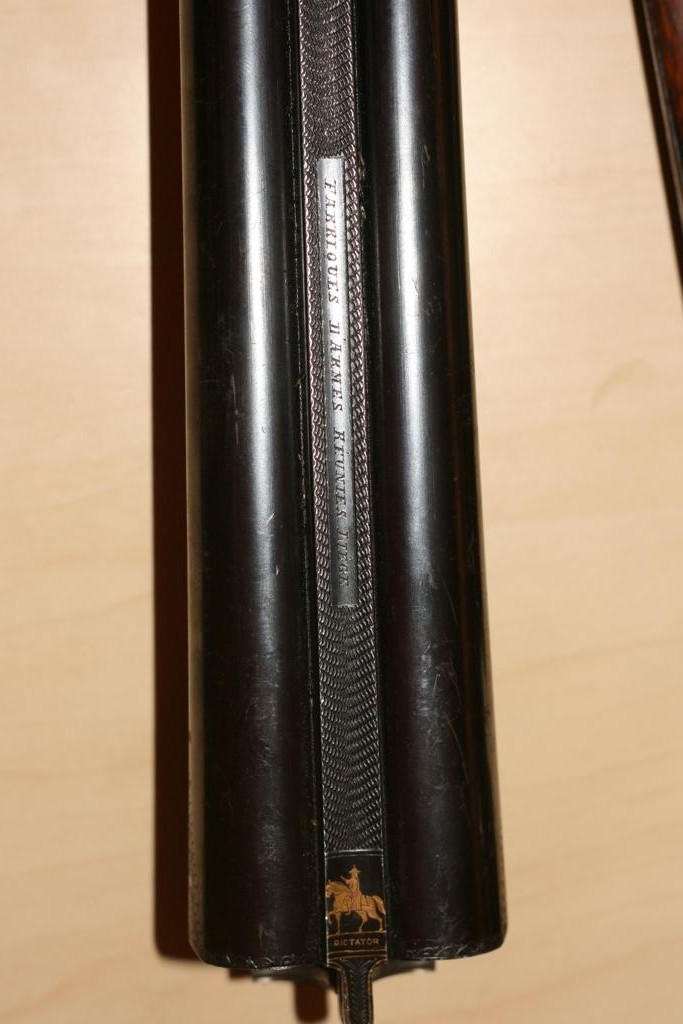
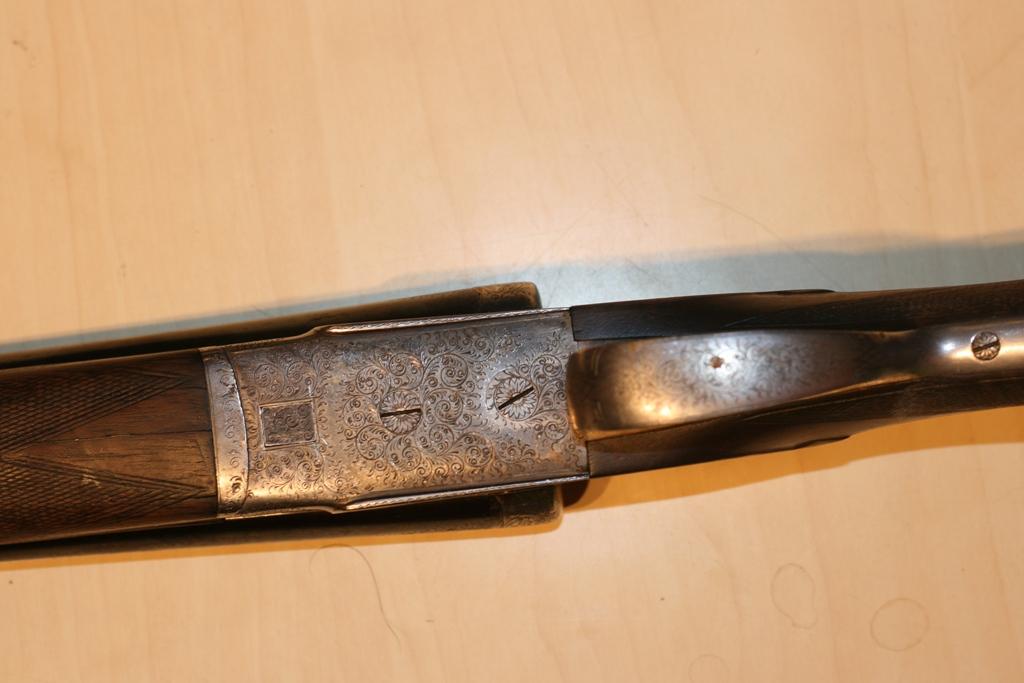
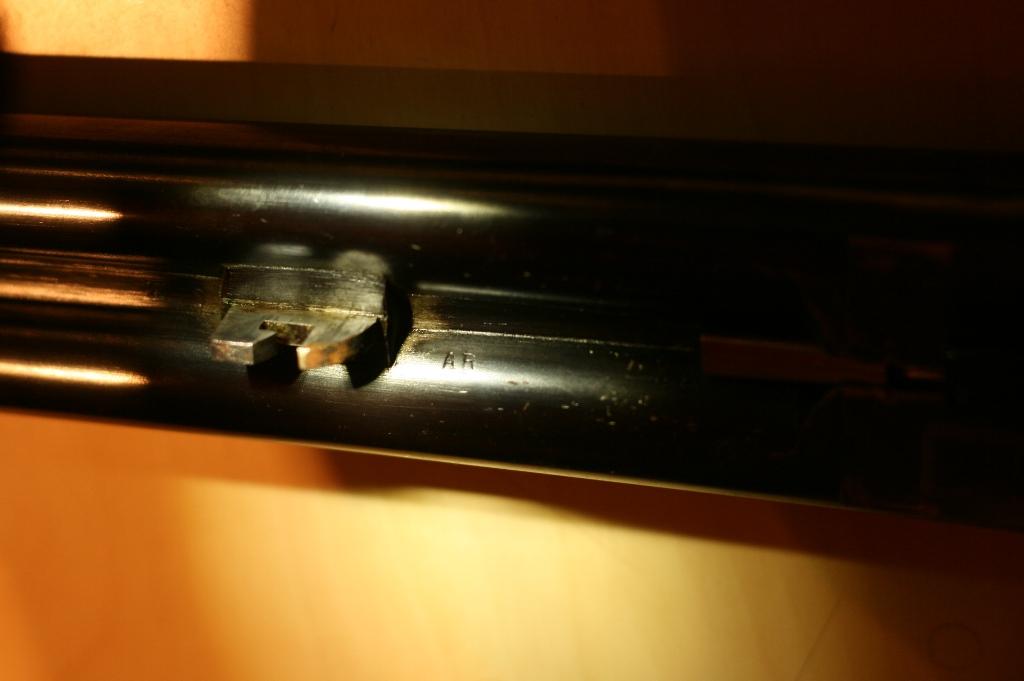
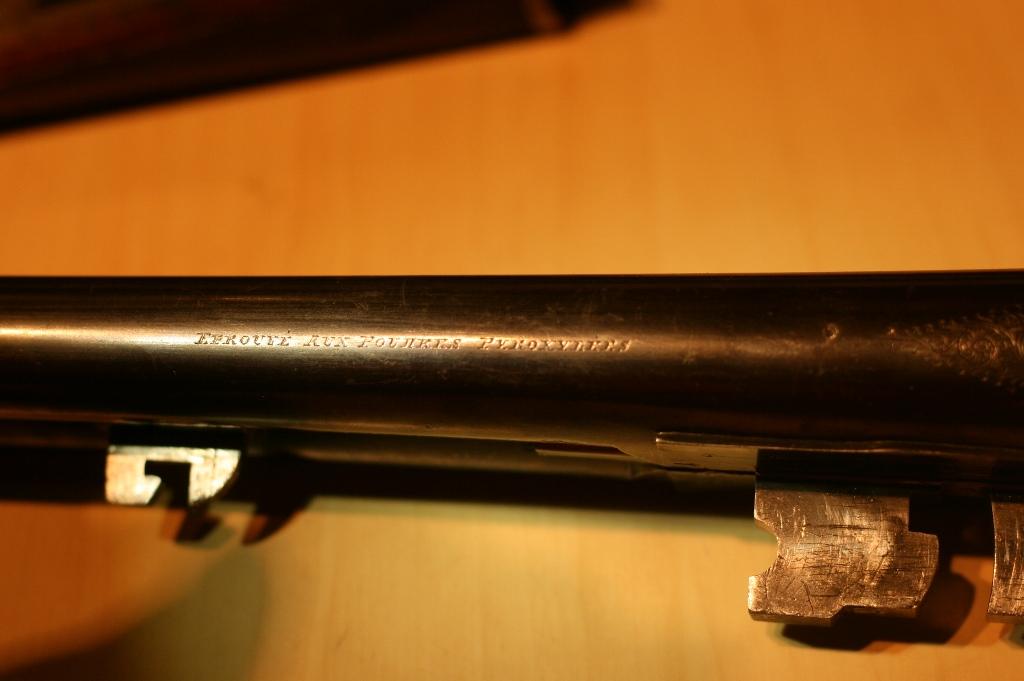
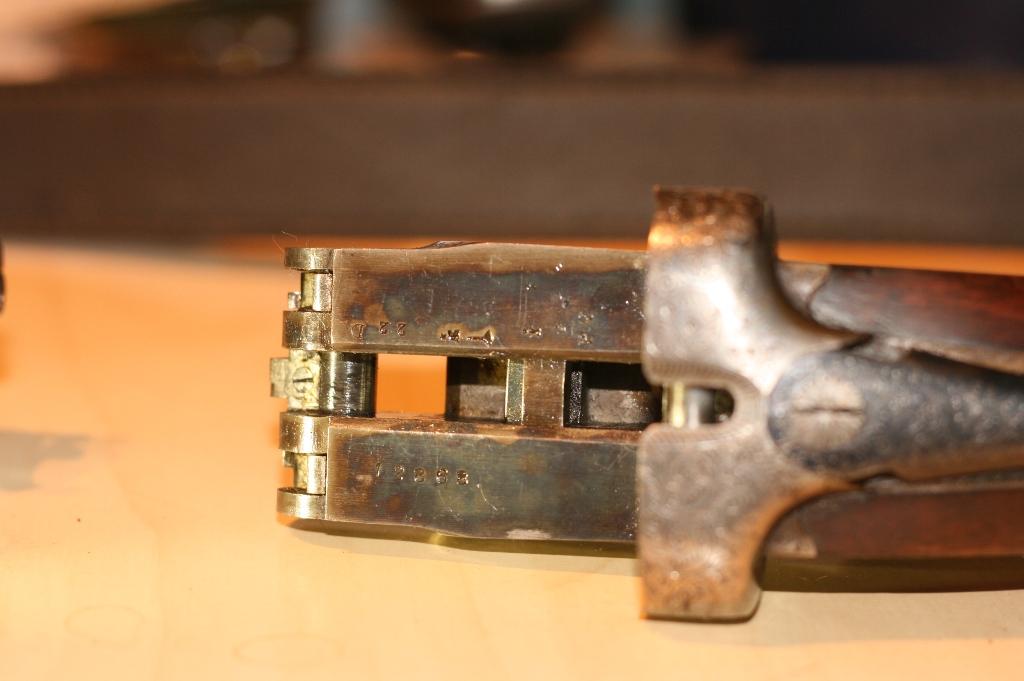
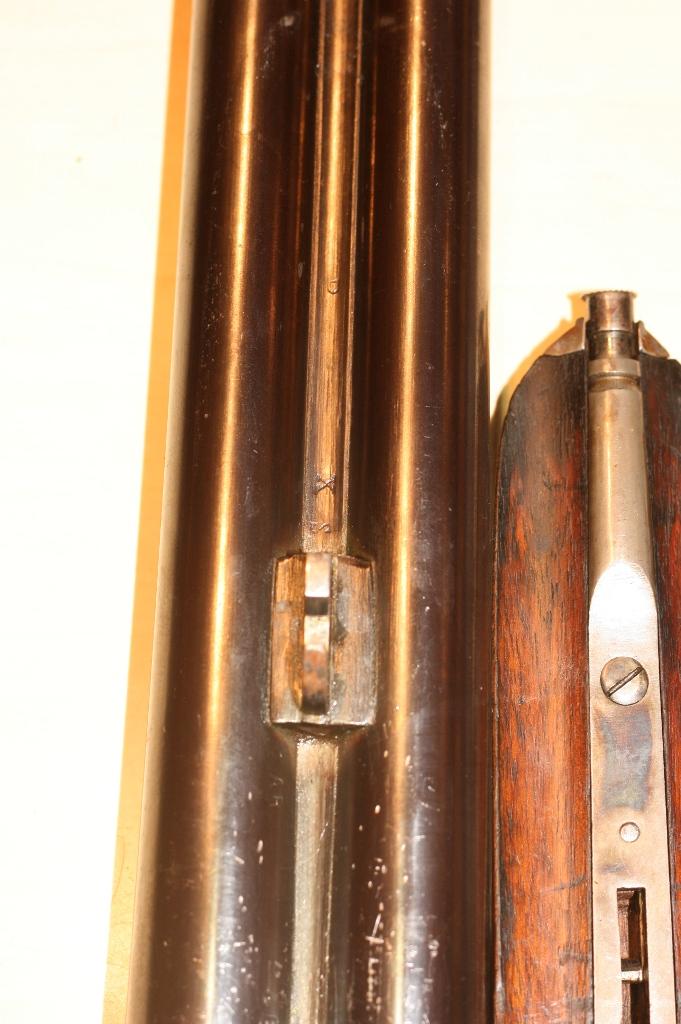
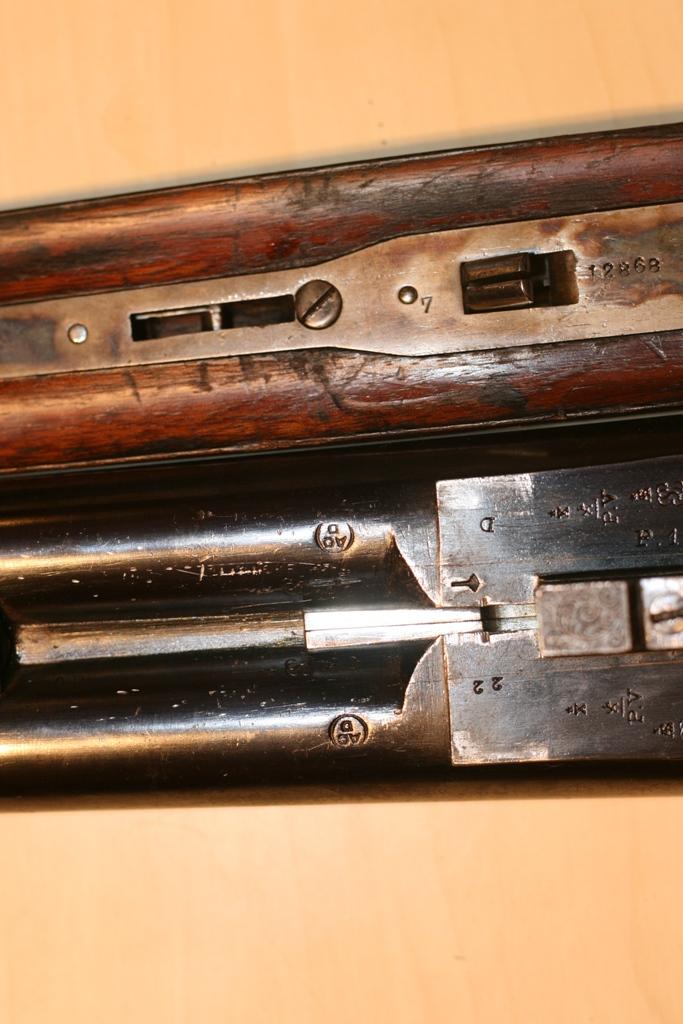
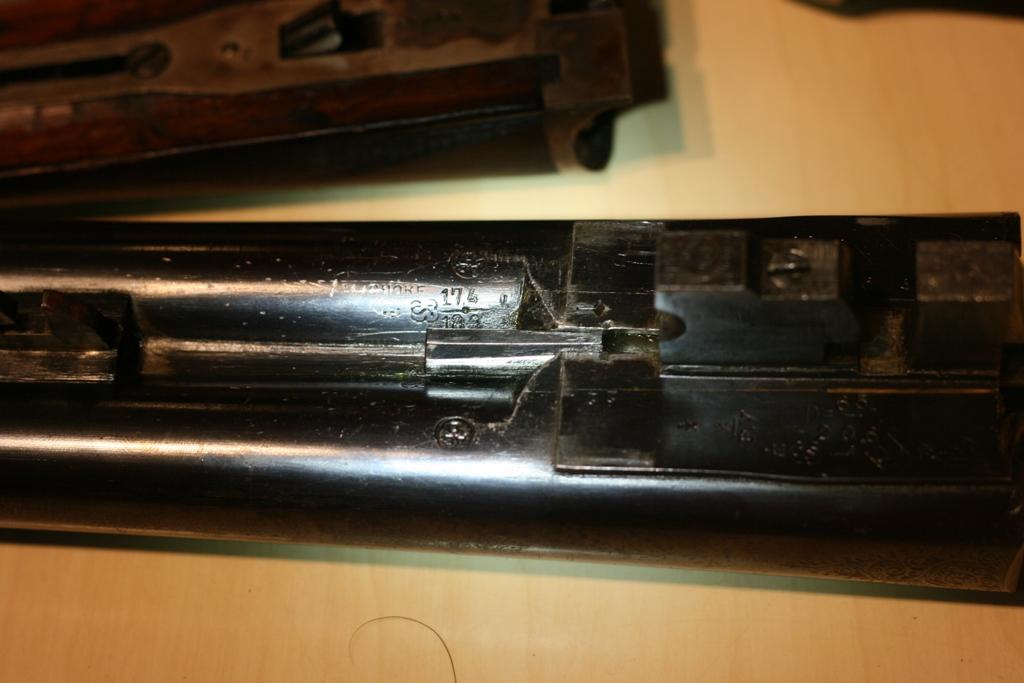
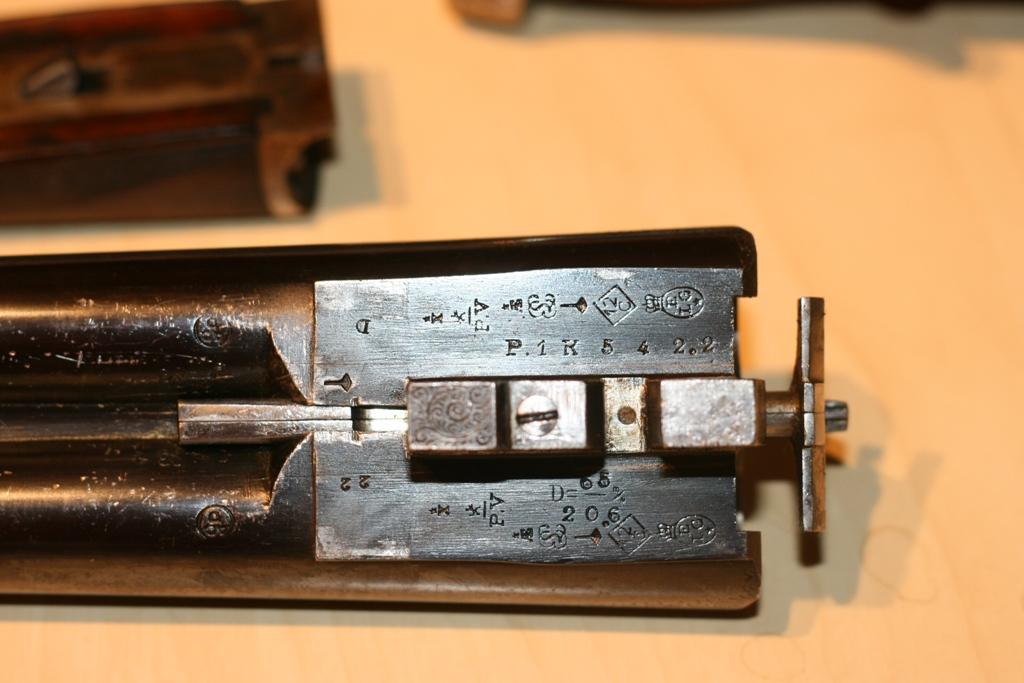
Fabriques d’Armes Réunies
Revolver with central percussion and box frame. The grooved cylinder is with 7 rooms the made-to-order of Russian Nagant. A safety is placed on the left side and a lever is placed at the front one. Its operation makes it possible to make rock the cylinder. It is besides this bolt which is the subject of the patent n° 194508 of the 15.09.1906.
The weapon carries the lawful punches of the proofhouse of LIEGE, namely:
ELG on star in a crowned oval: final acceptance post 1893.
0 spangled: countermark of the controller post 1877.
PV surmounted of a stylized lion: test with the powder without smoke, of use of 1898 to 1968.
The mark L crowned on the internal face of the cylinder don’t belong to the proofhouse, it could act of a mark of foundry of the cylinder!?
Crowned mark F.A.R. belongs to the Fabriques d’armes Réunies (Proofhouse 1901/1920) street Charles Morren, 26-28 with LIEGE.
Appendix: patent 194508.
GG

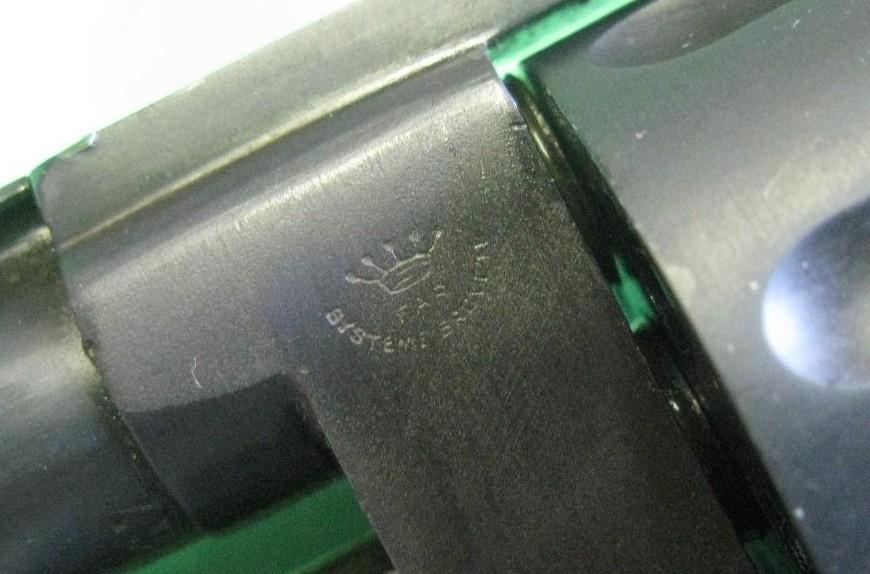
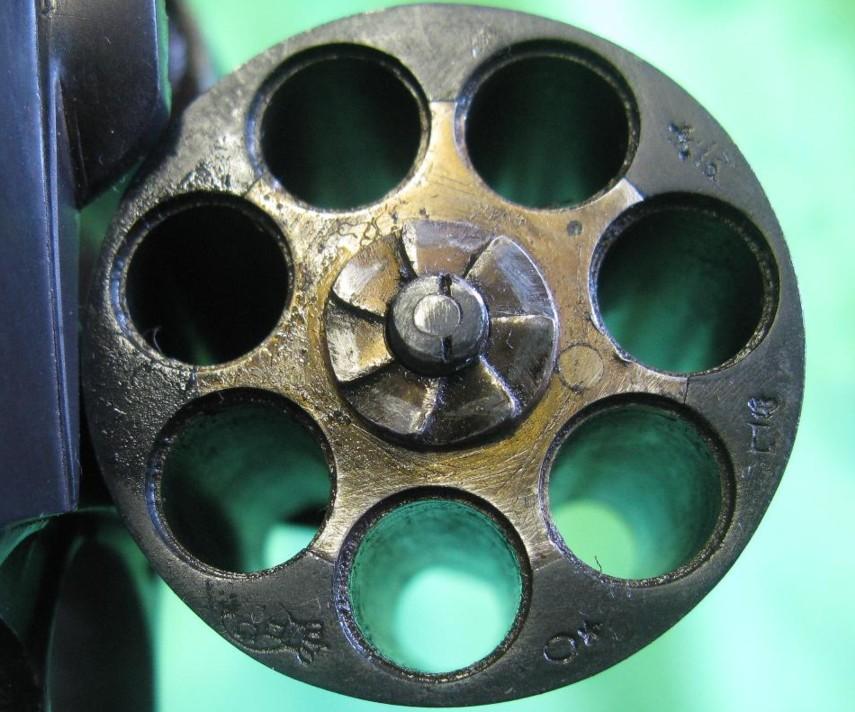
Patent 194508
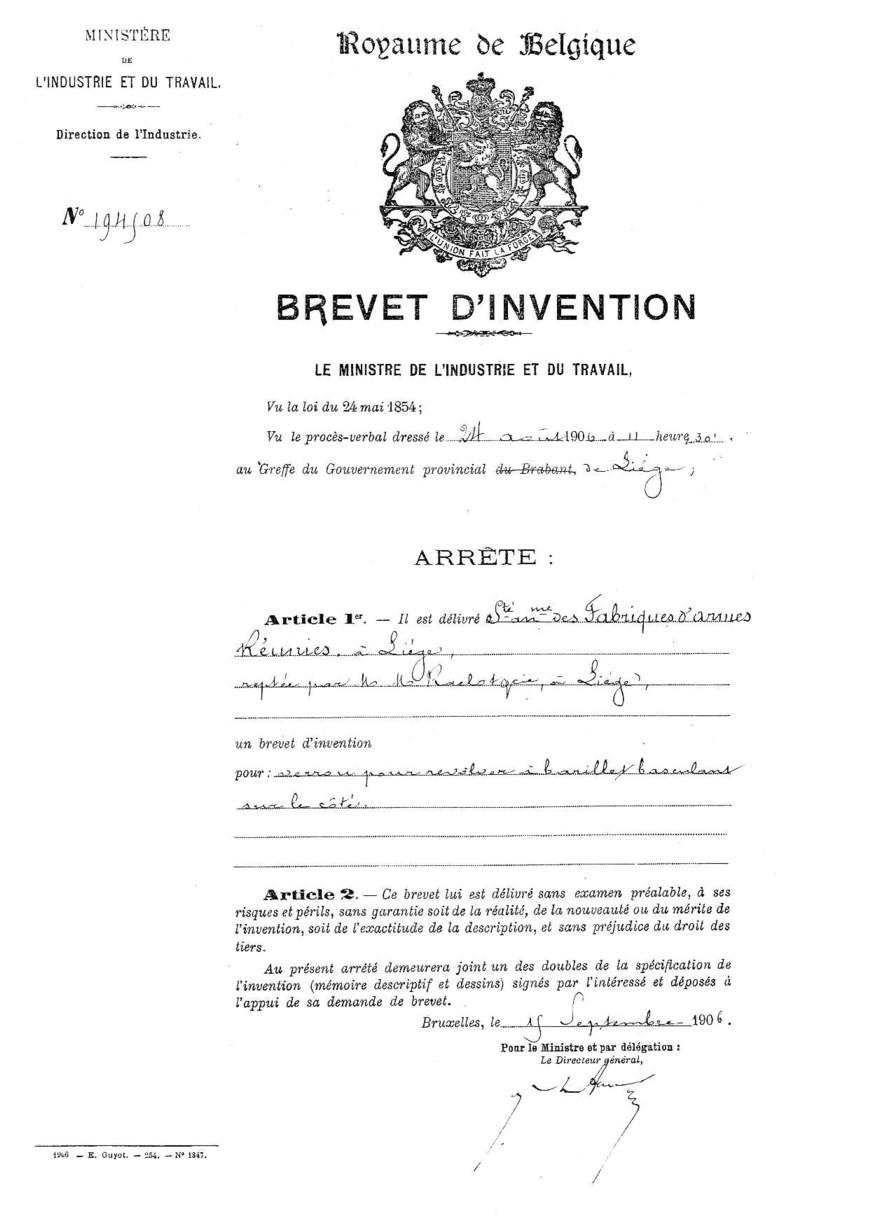
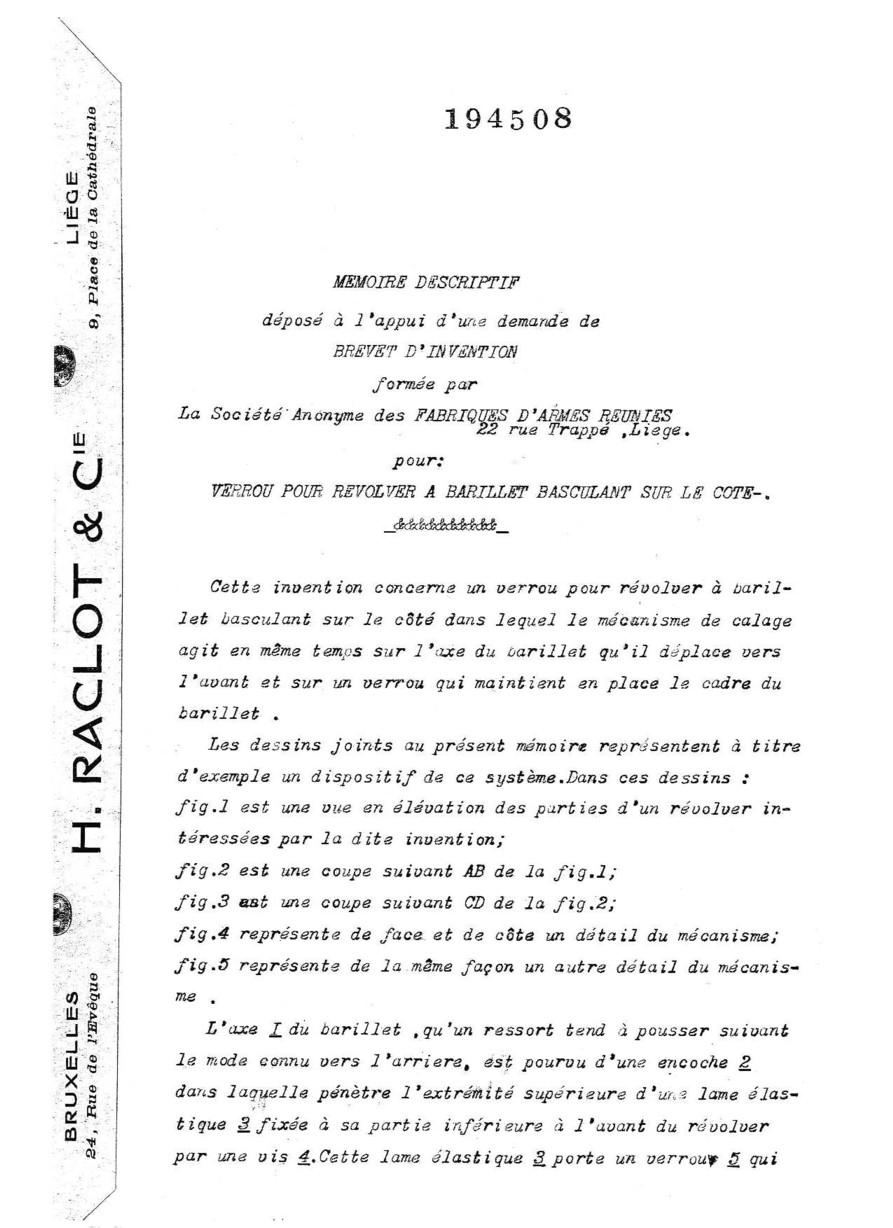
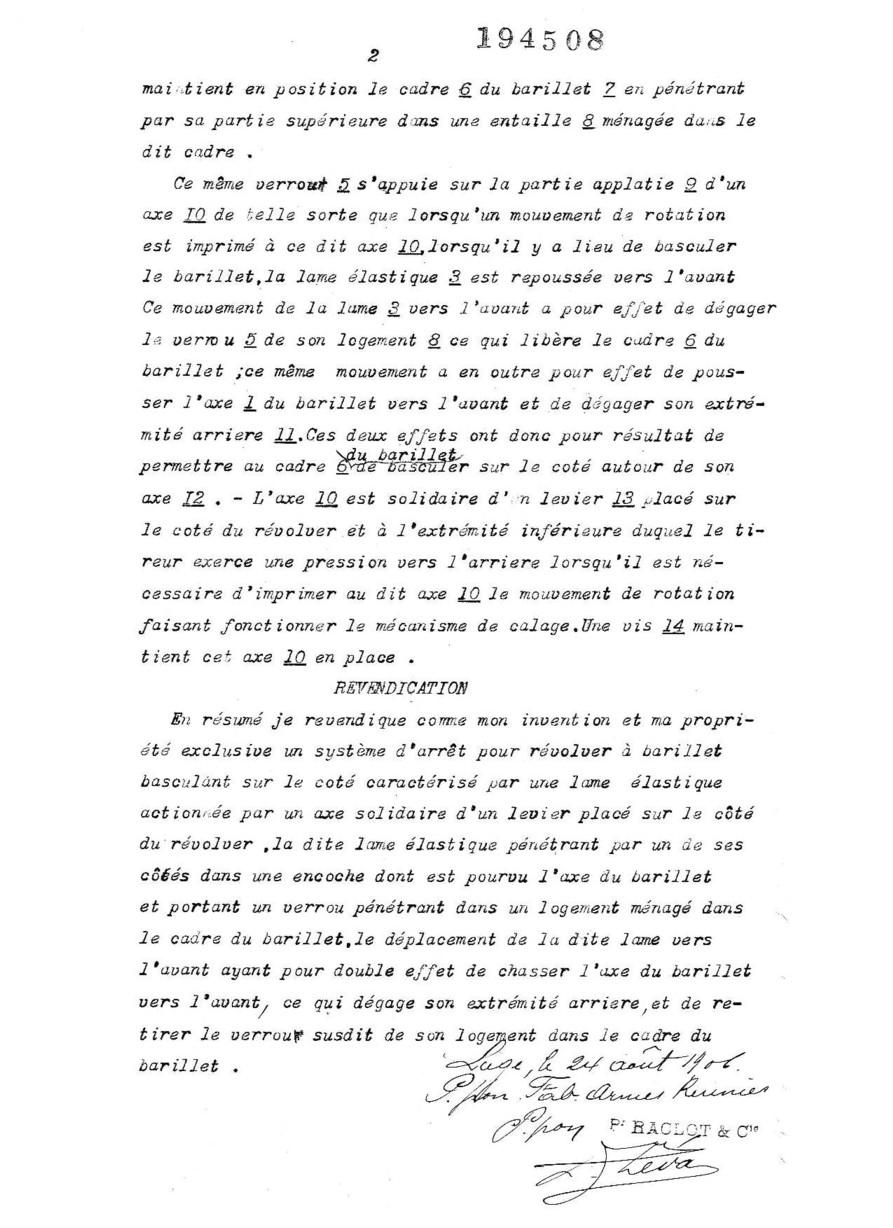
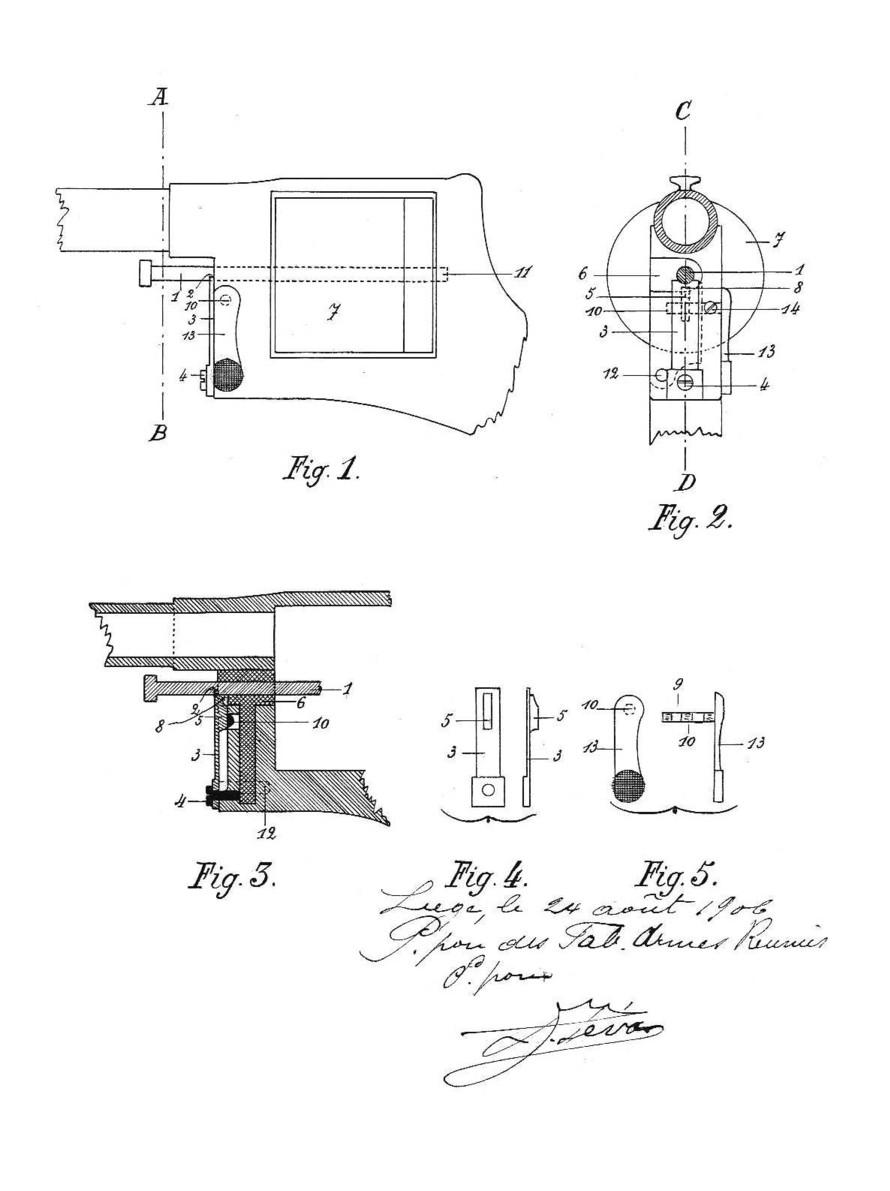
Fabriques d’Armes Réunies
Manufacture of weapons.
Rue Charles Morren, 26-28 Liège (03/02/1921)
Deposited of mark.
N° 2575 – Liège 03/02/1921
Founded in 1909 to produce the semi-automatic gun Dictator.
Reorganized after 1918 in "Fabrique d’Armes Unies".
Disappearance about 1931.
Dictator
This was an in 1909 patented .25 automatic pistol. The patent (brit. pat. 20277/1909) was written to the name of the company. The name of the inventor is unknown.
In the USA the same pistol was sold with the name "Centaure".
The construction of the pistol is very interesting as it was with no doubt the first "telescope-action", a construction which appeared in 1944-1945 at machine-guns an was celebrated at that time as big progress of gun-development. Anyhow it was unusual for pocket-pistols. It seems the unknown inventor just was looking for some new solution in order to prevent problems with other patents.
It is unknown, how many of these pistols have been produced, but it seems they must not have been too many as the production was very difficult.
DICTATOR of the Fabriques d’armes réunies (FAR)
This small automatic gun of pocket has the comic name of DICTATOR.
It is of caliber .25 or 6,35 mm, the barrel measures 58 mm and carries 4 stripes on the right.
Its weight is 415 grams. It is 119 mm long, 81 mm high and is a thickness of 22,5 mm.
Its system is with simple action. The sight is fixed and safety with lever.
The completion is bronzed. The grips are out of hard plastic with letters SBF in an oval lying. These letters should for me represent the founders of the F.A.R. is SIMONIS, BERTRAND and FRESARD.
Another type of plates represents the equestrian statue of CHARLEMAGNE (trade mark the 24.07.08.
This automatic pistol was patented in 1909. The license (brit.pat.20277/09) was taken in the name of the company.
GG
Photos Littlegun
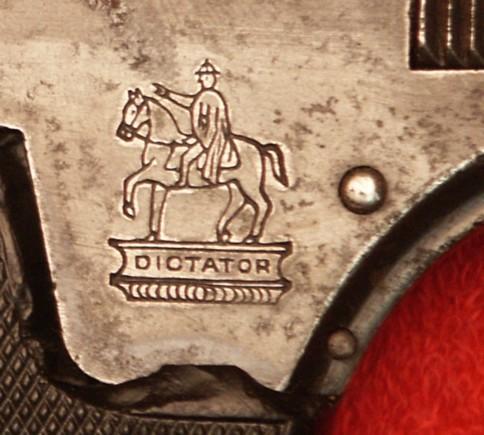
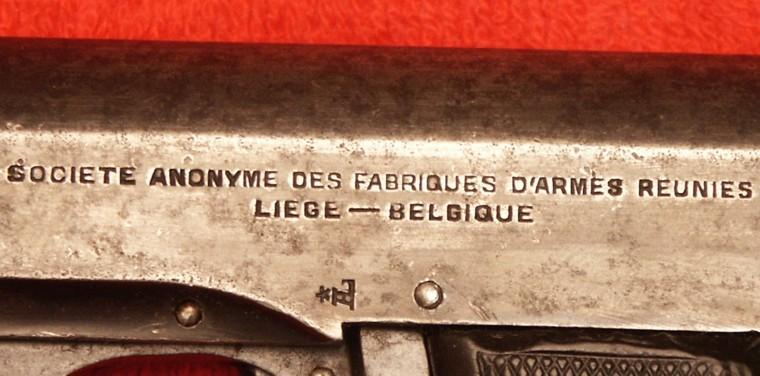
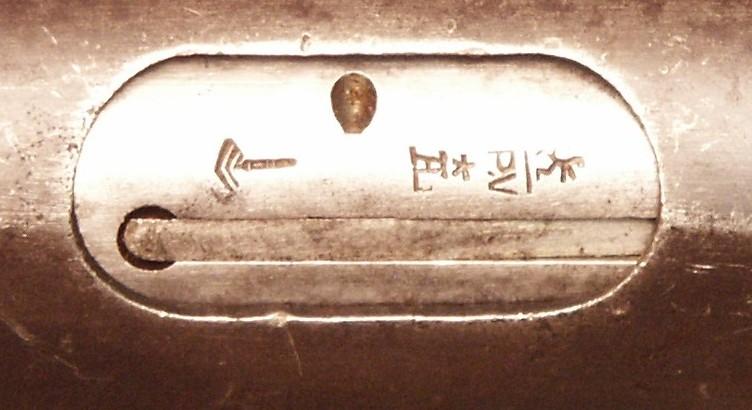
Rifle CENTAURE
The weapon
It acts of a shotgun to juxtaposed unrifled bores gauges of it 28-70, system GREENER, hammerless, key top lever, pistol grip.
The punches
We raise various punches of the tests house of Liege, that is to say:
Spangled ELG in a crowned oval: acceptance of the test (1893/1968)
Peron: inspection (1853 until today)
PV overcome by a stylized lion: test with the powder without smoke (1898/1968)
28-70 in large C: gauge nominal and length of the casing (1924 until today)
Choke 13.8: chokés guns: cal to 22 cm of the breech (1924/1968)
The manufacturer
a) Of the barrels: the mark JF and the mention SIEMENS-MARTIN (steel used), indicate that they are guns manufactured by Jean FALLA, street New Bonne, 35 in Liege (Test house of Liège 1931/1953).
b) Of the weapon: the mark CENTAURE was deposited by HANQUET Emile the 09.02.1910.
At the time of the fusion of HANQUET with other manufacturers in 1920 (FABRIQUES D’ARMES REUNIES LIEGE S.A.) street Trappé, 22 in Liege, the mark with the CENTAURE continued to be used.
GG

